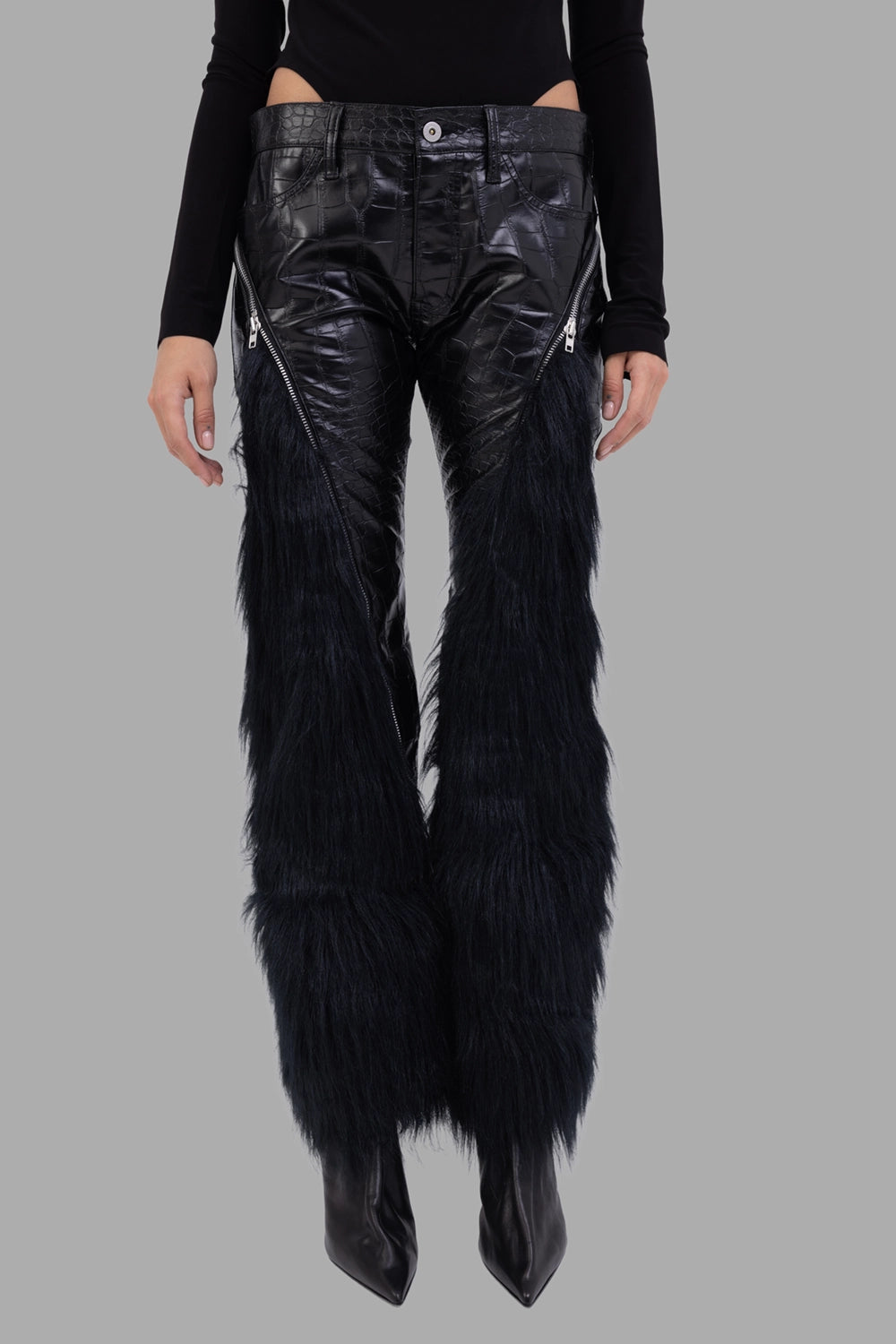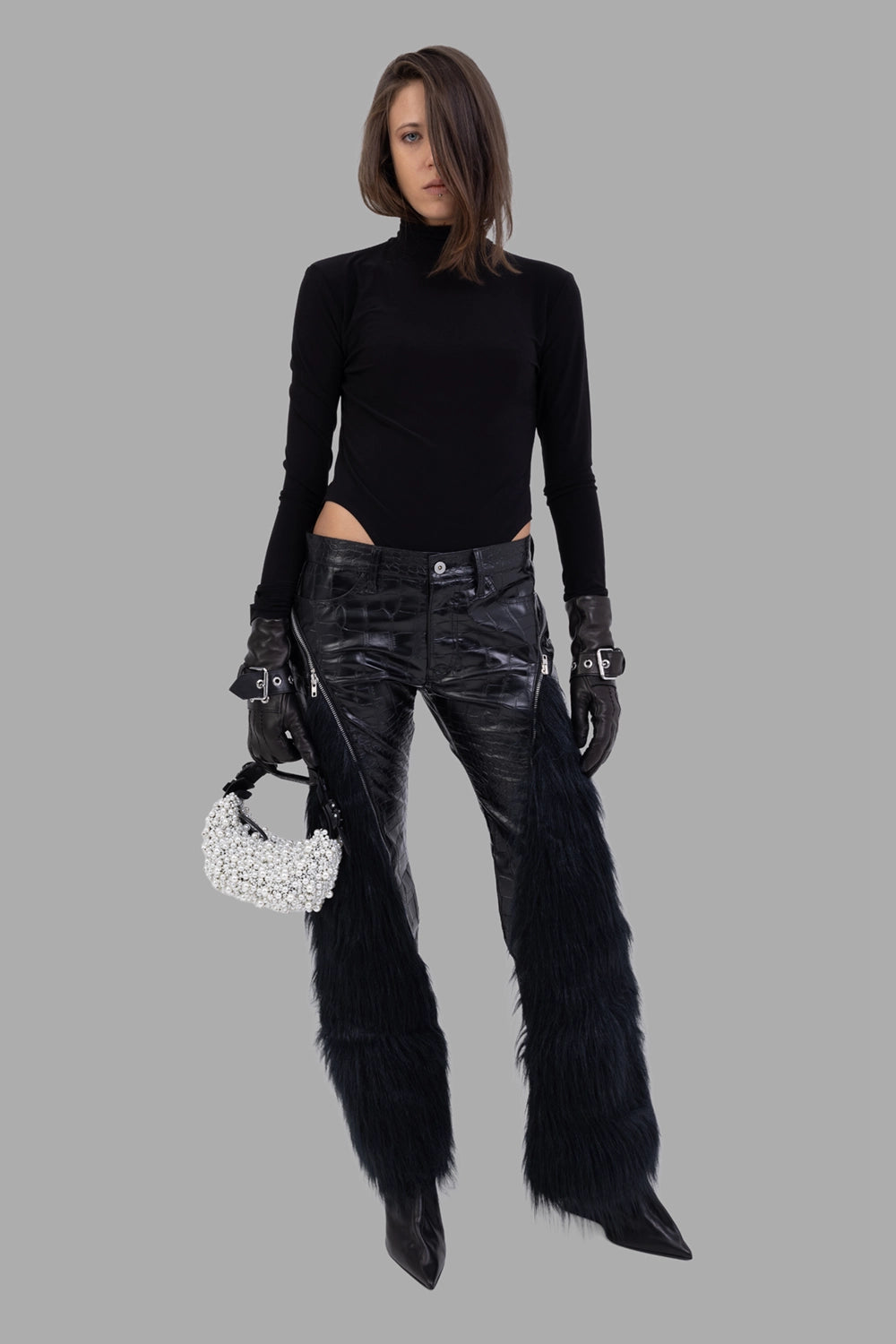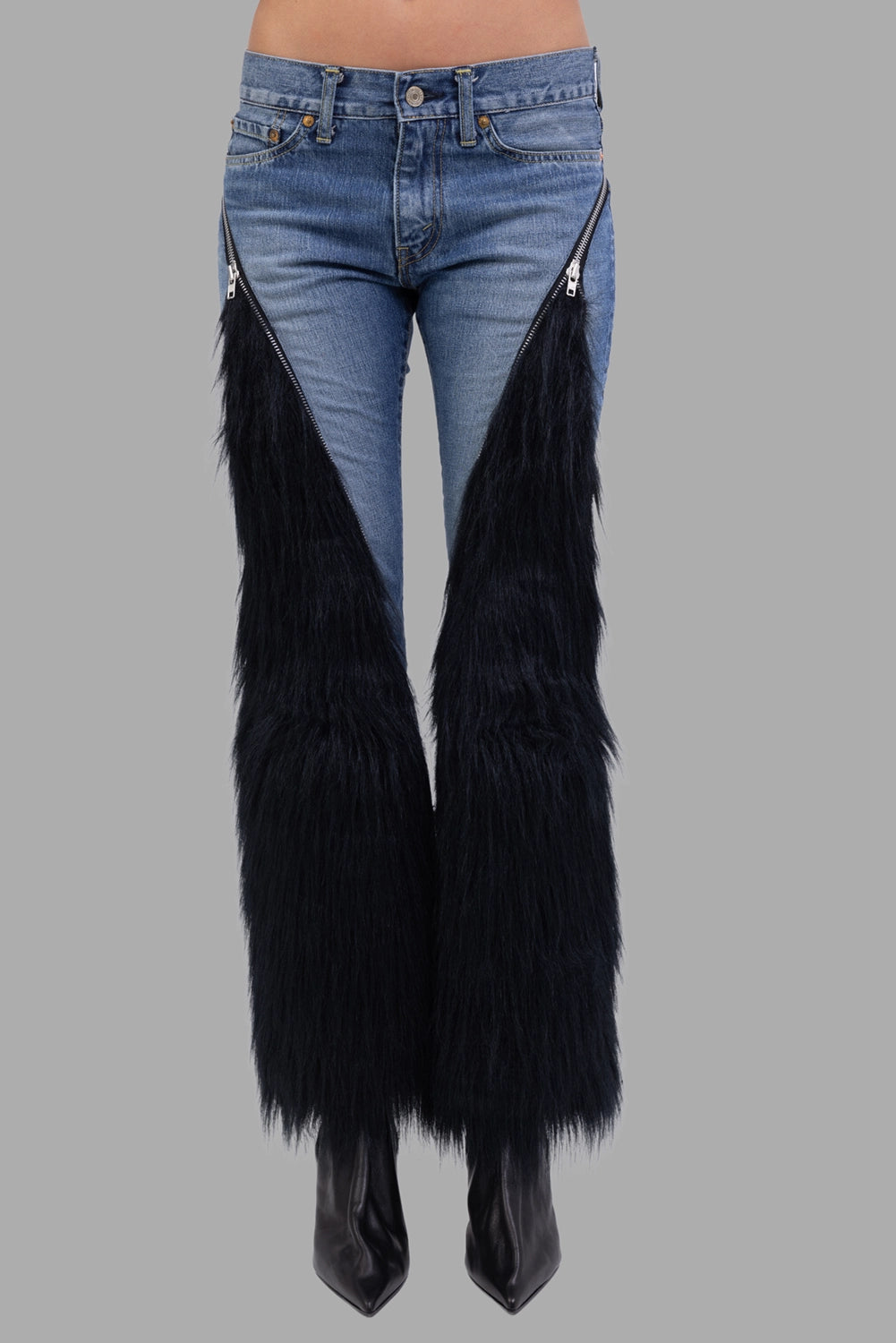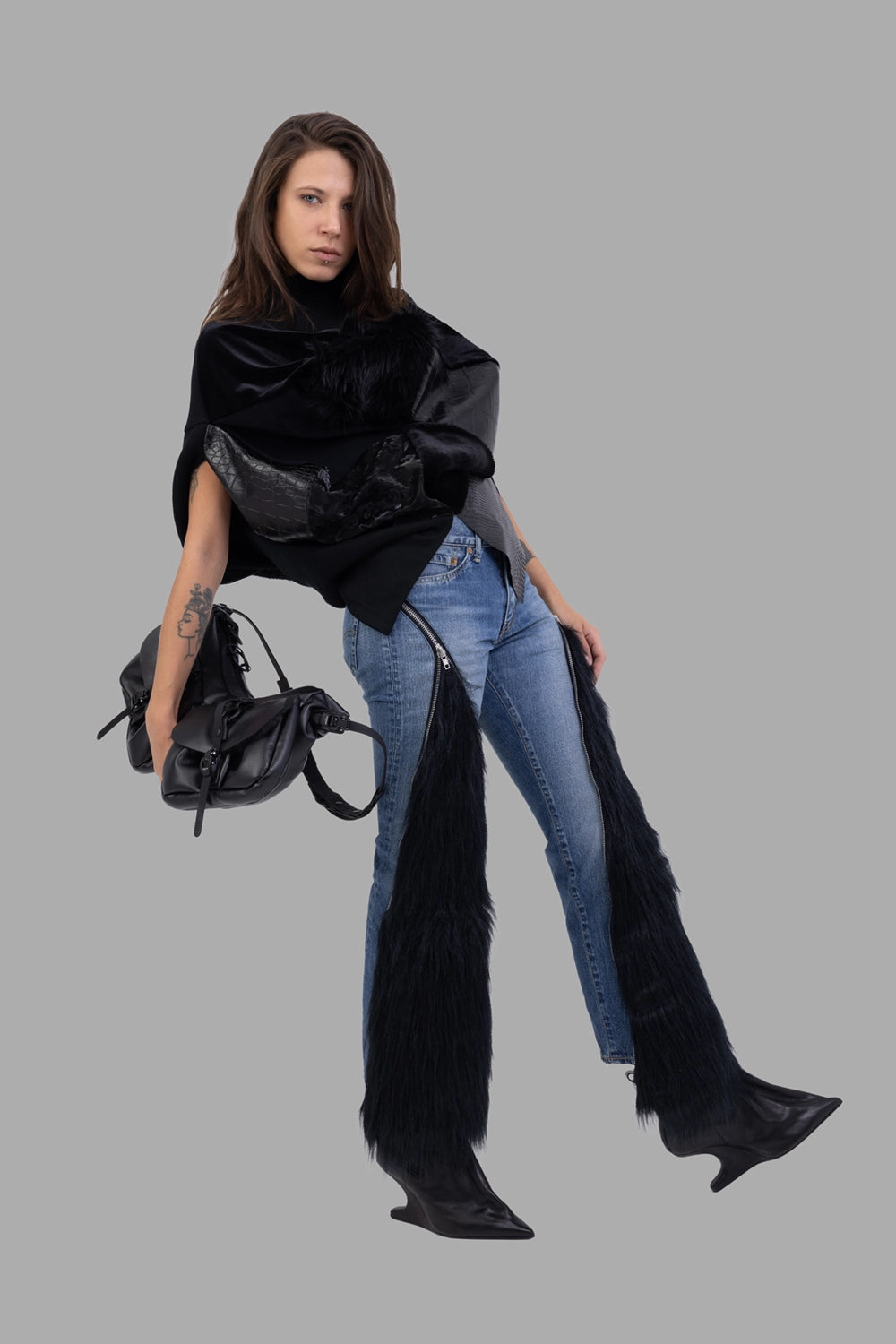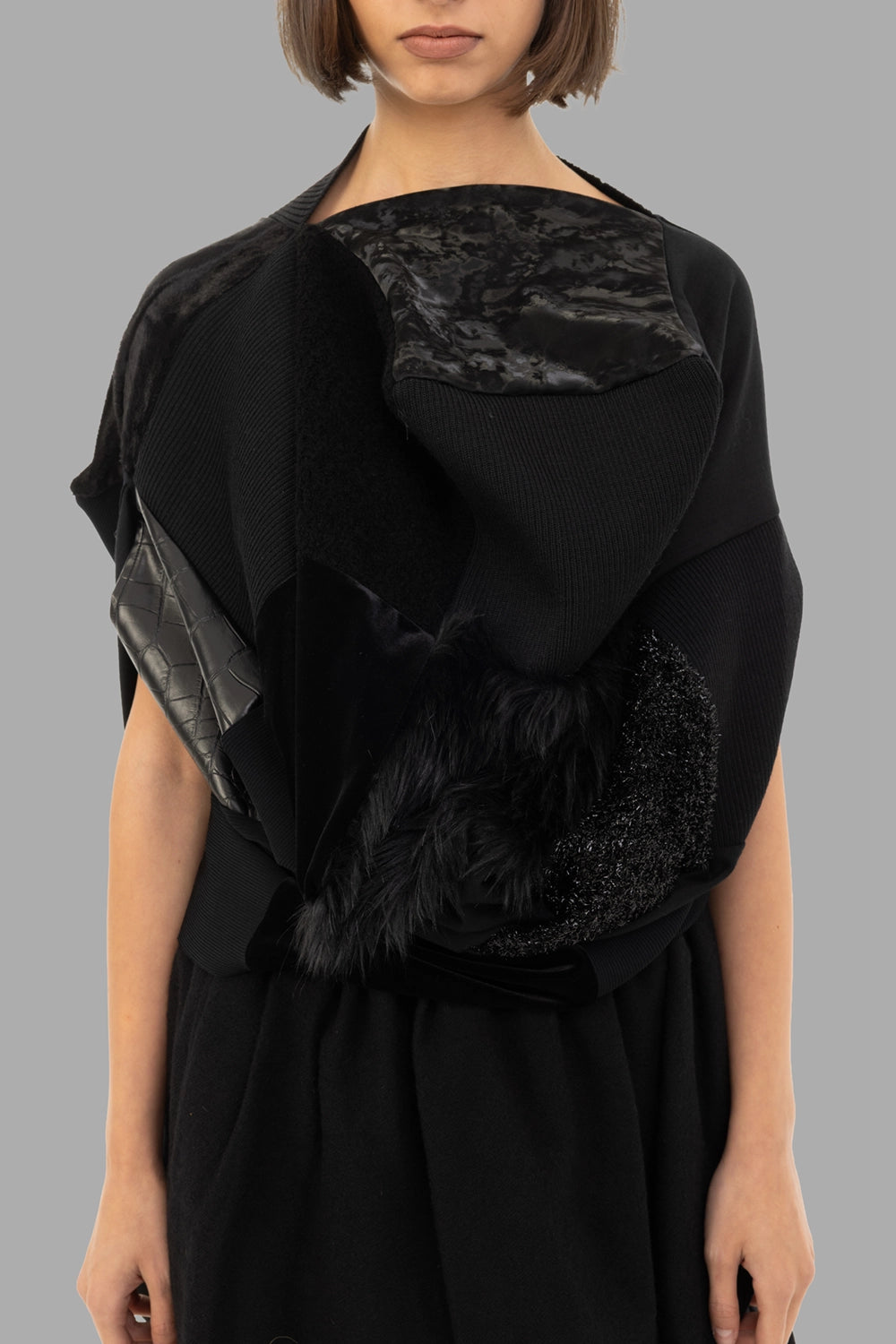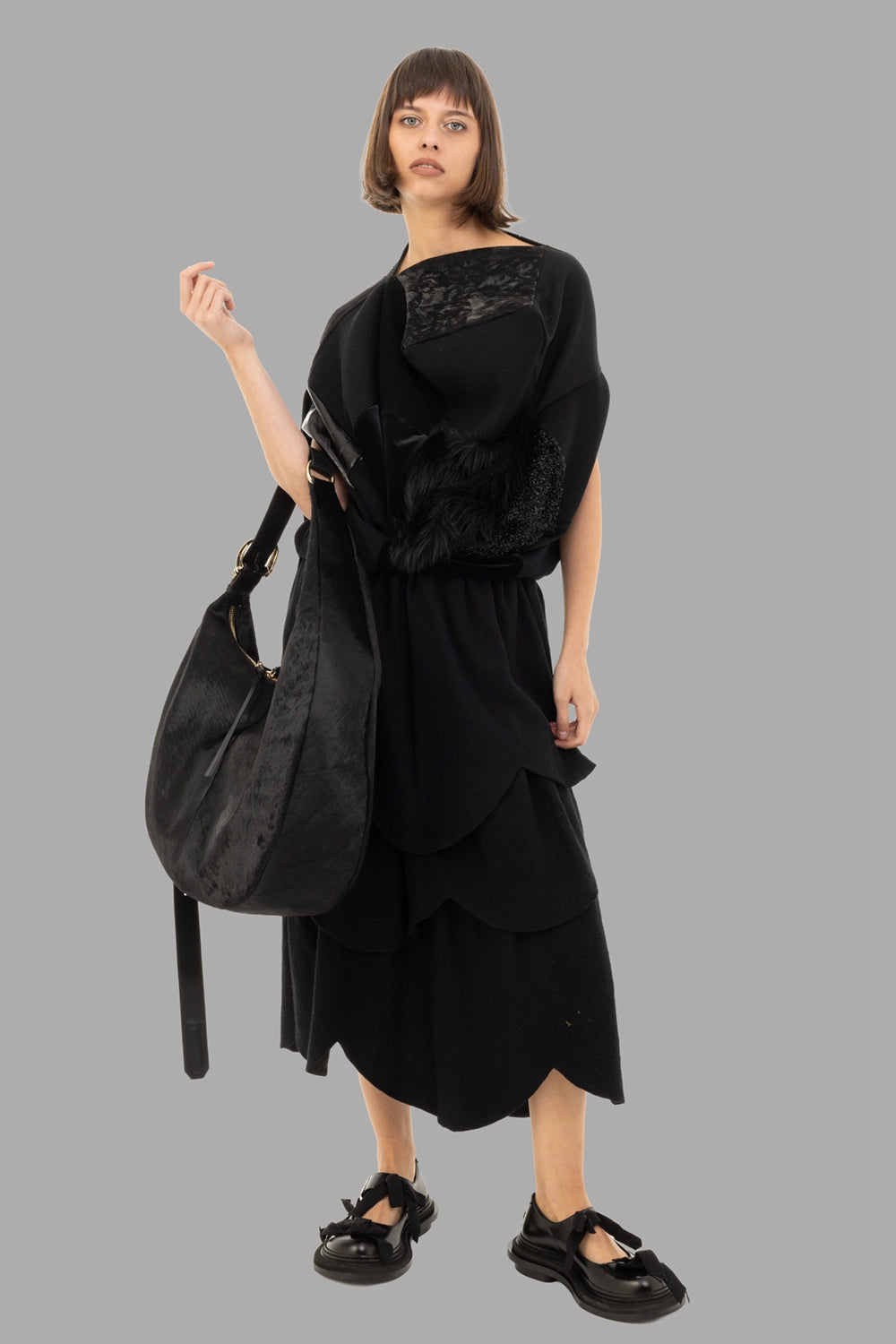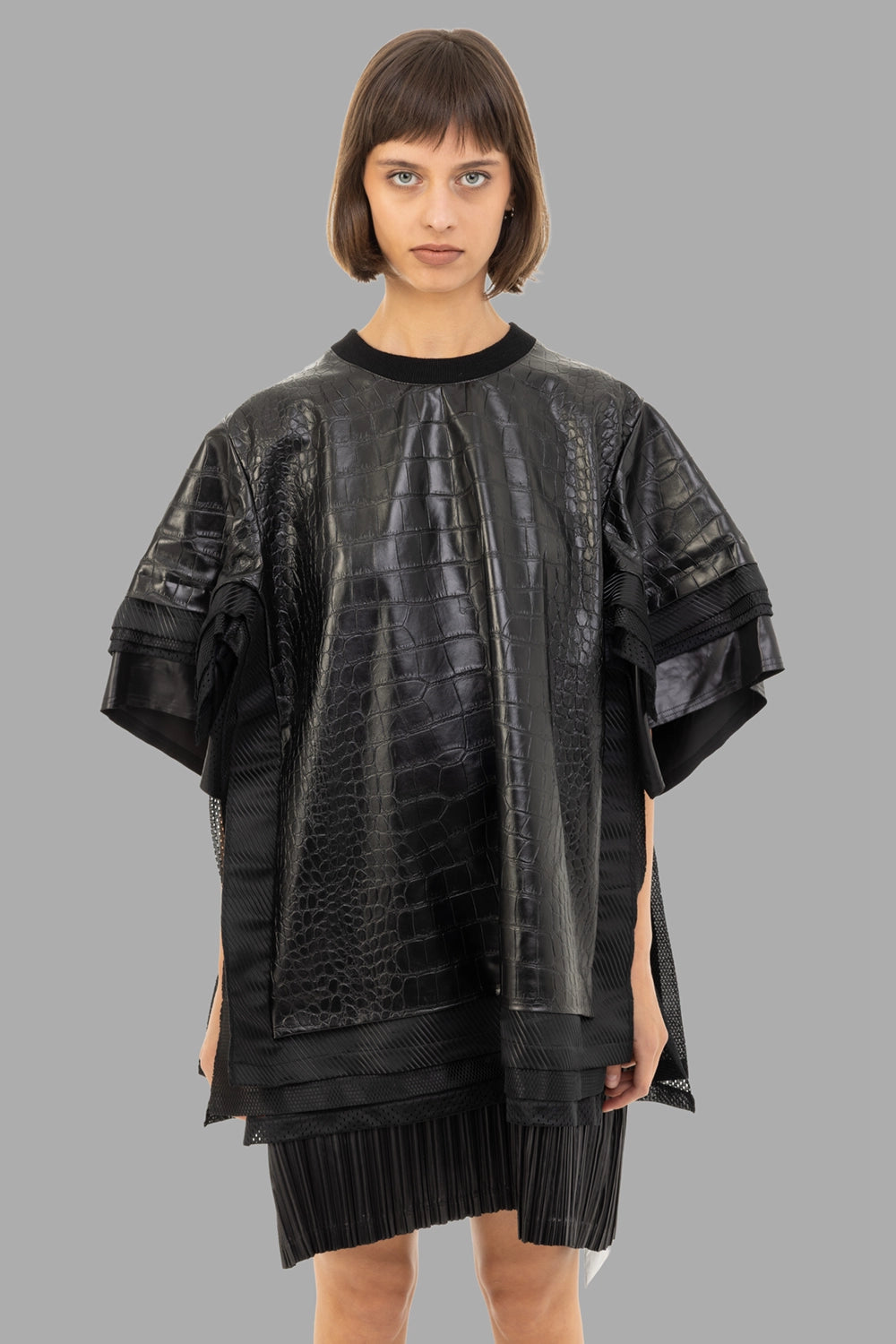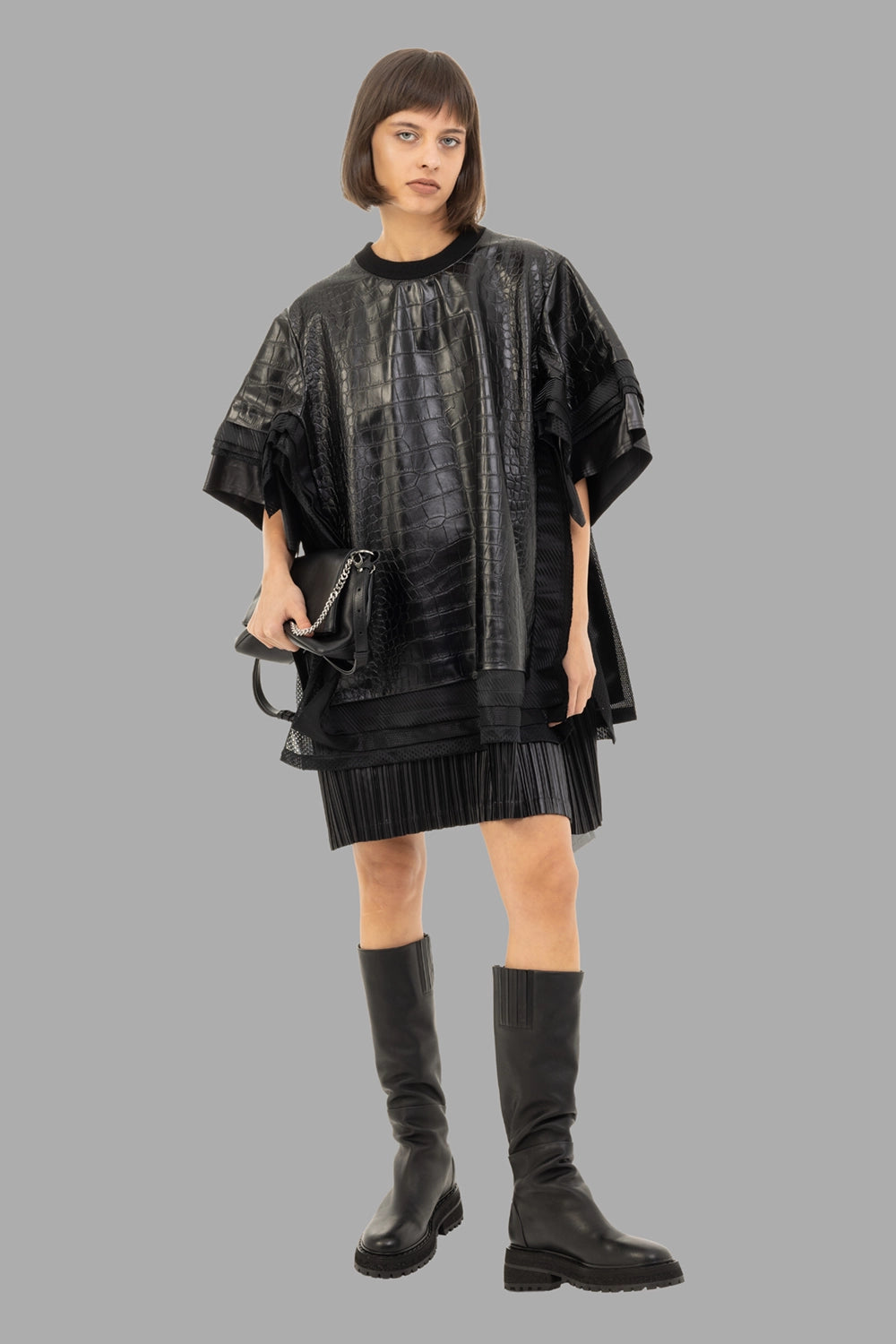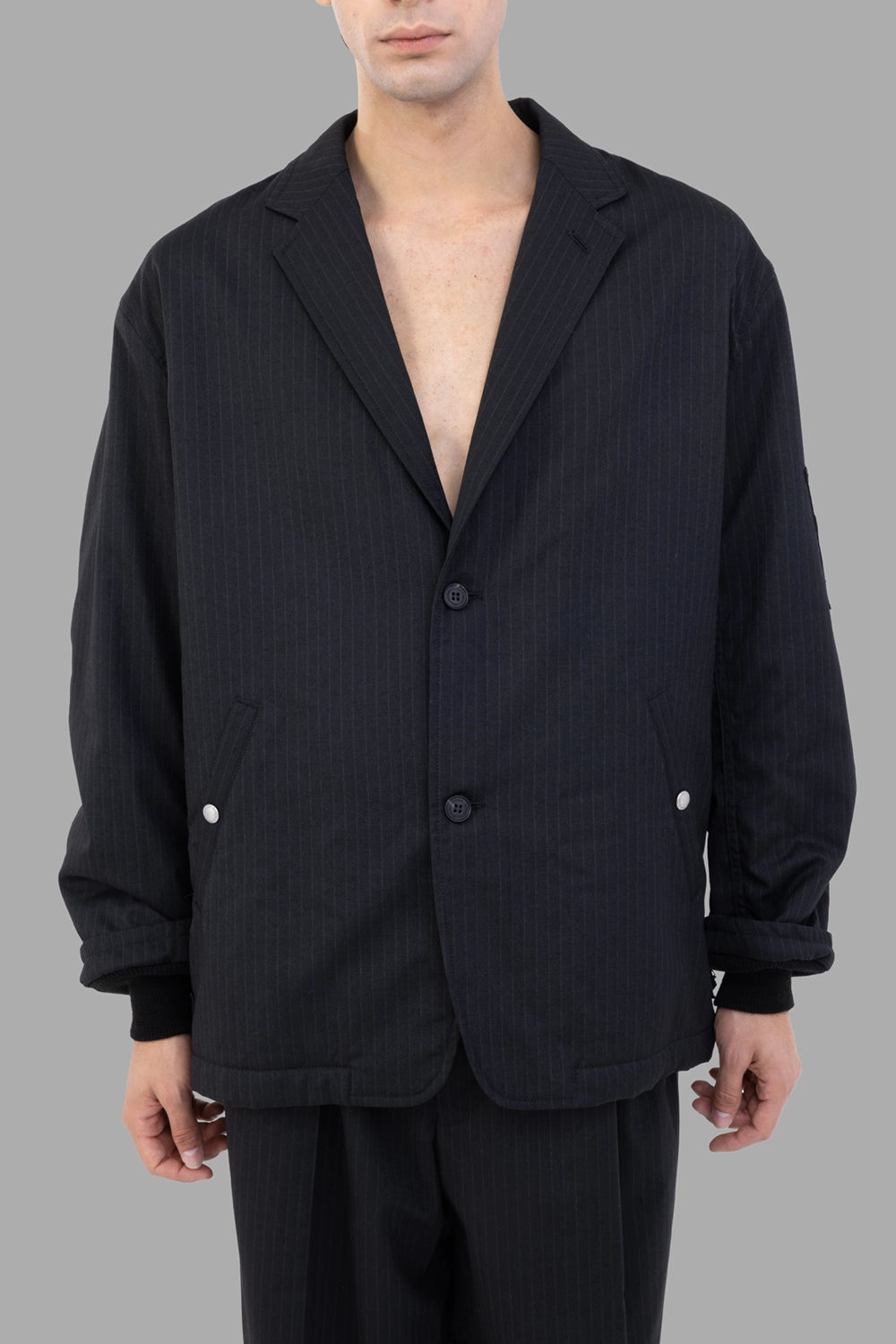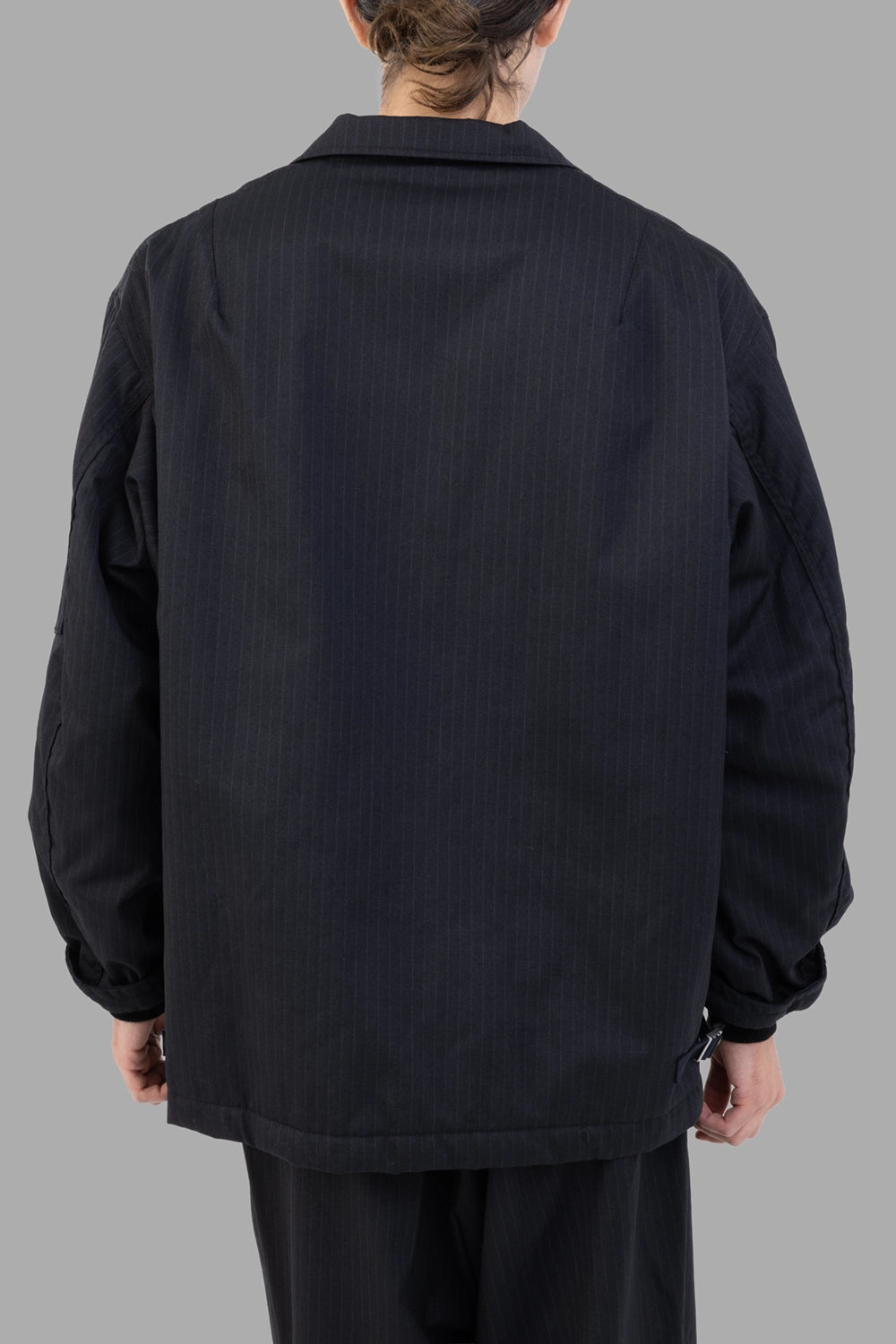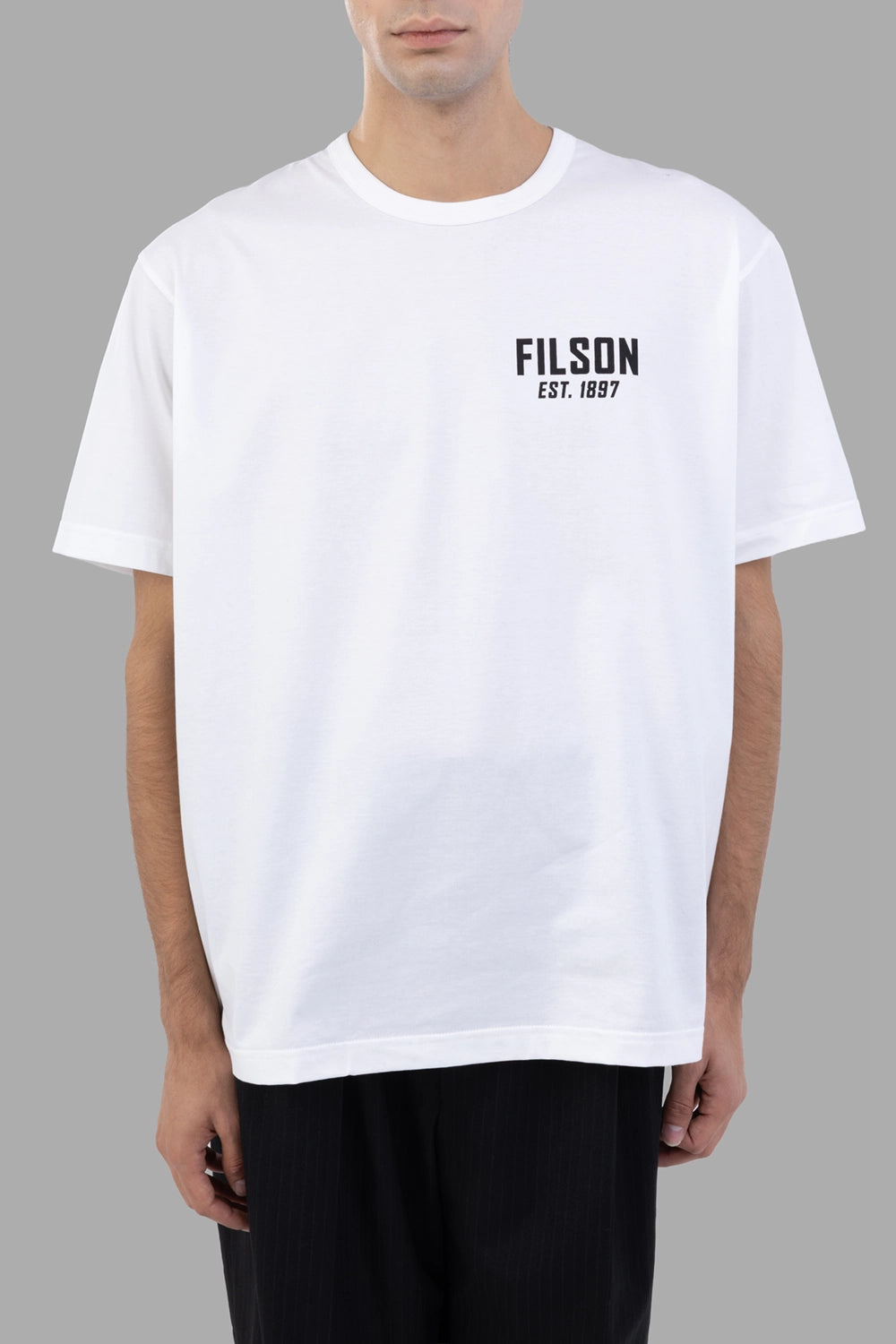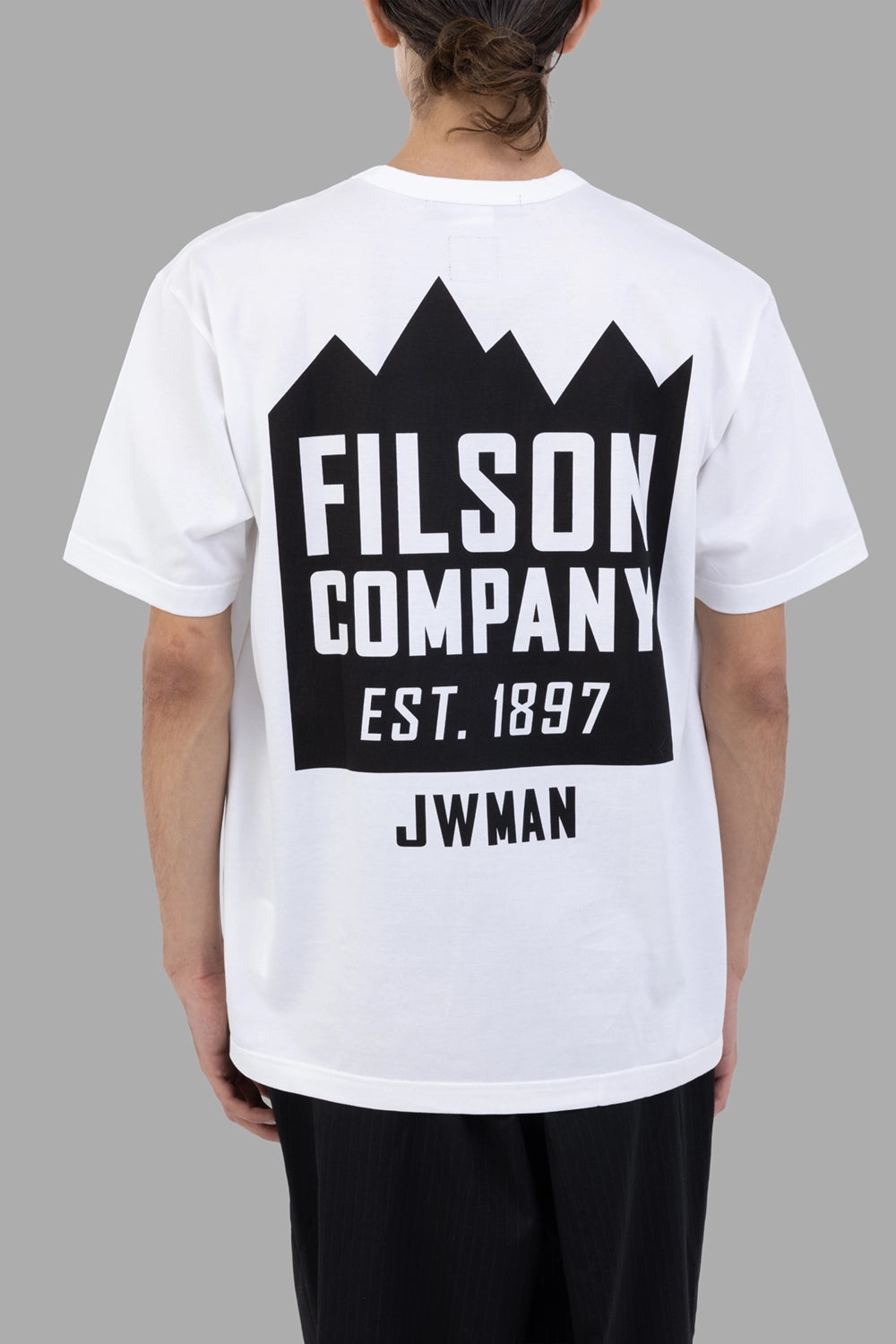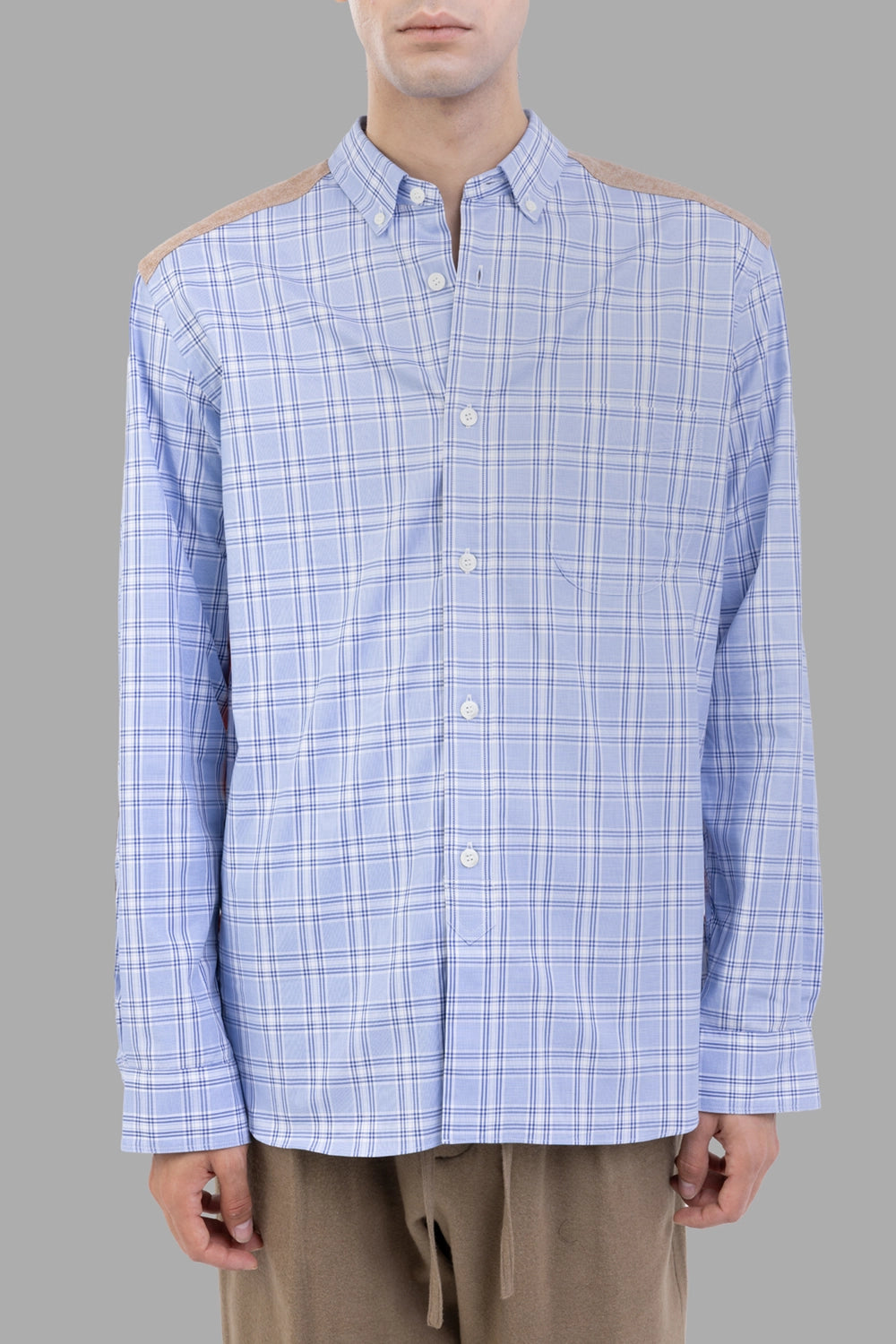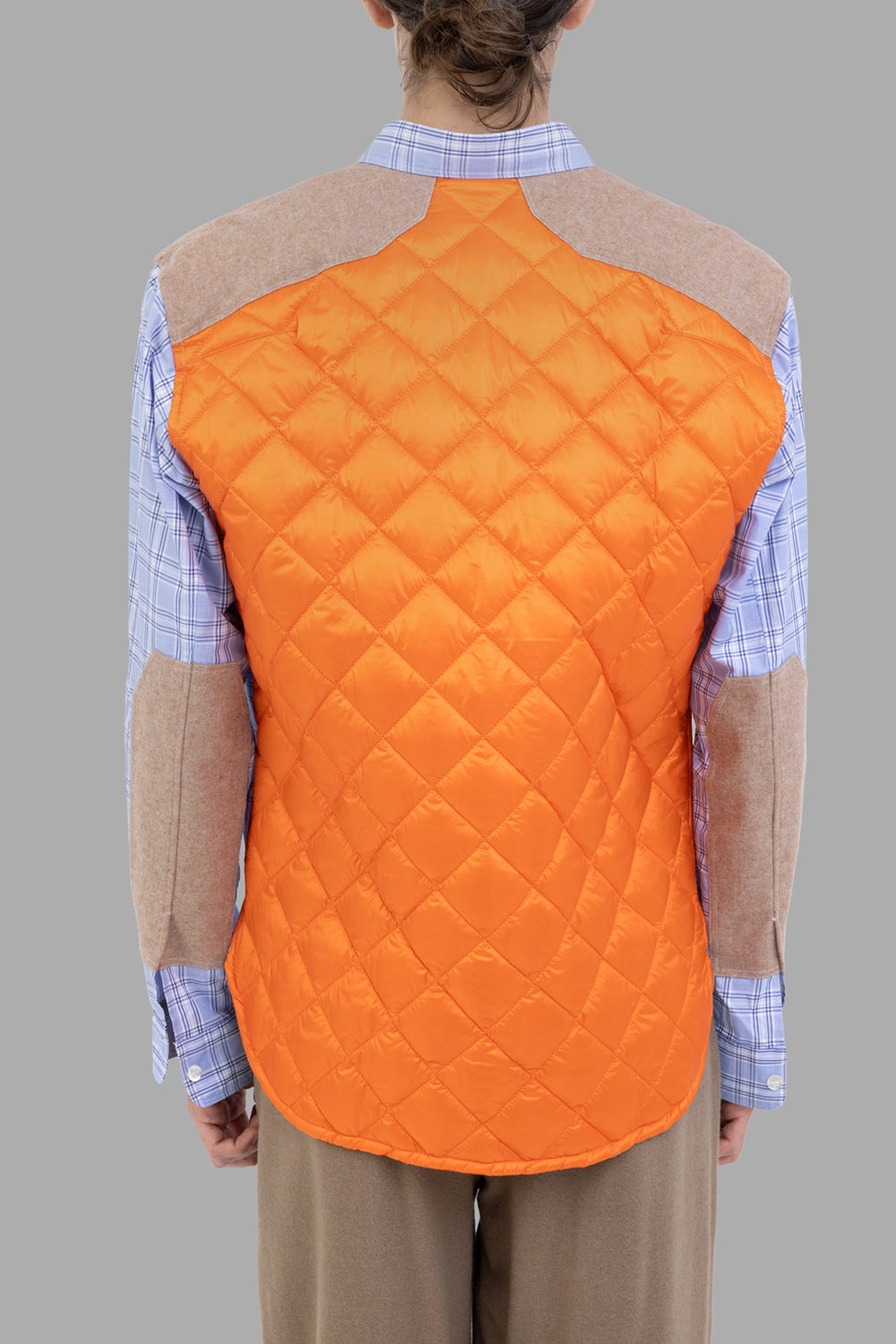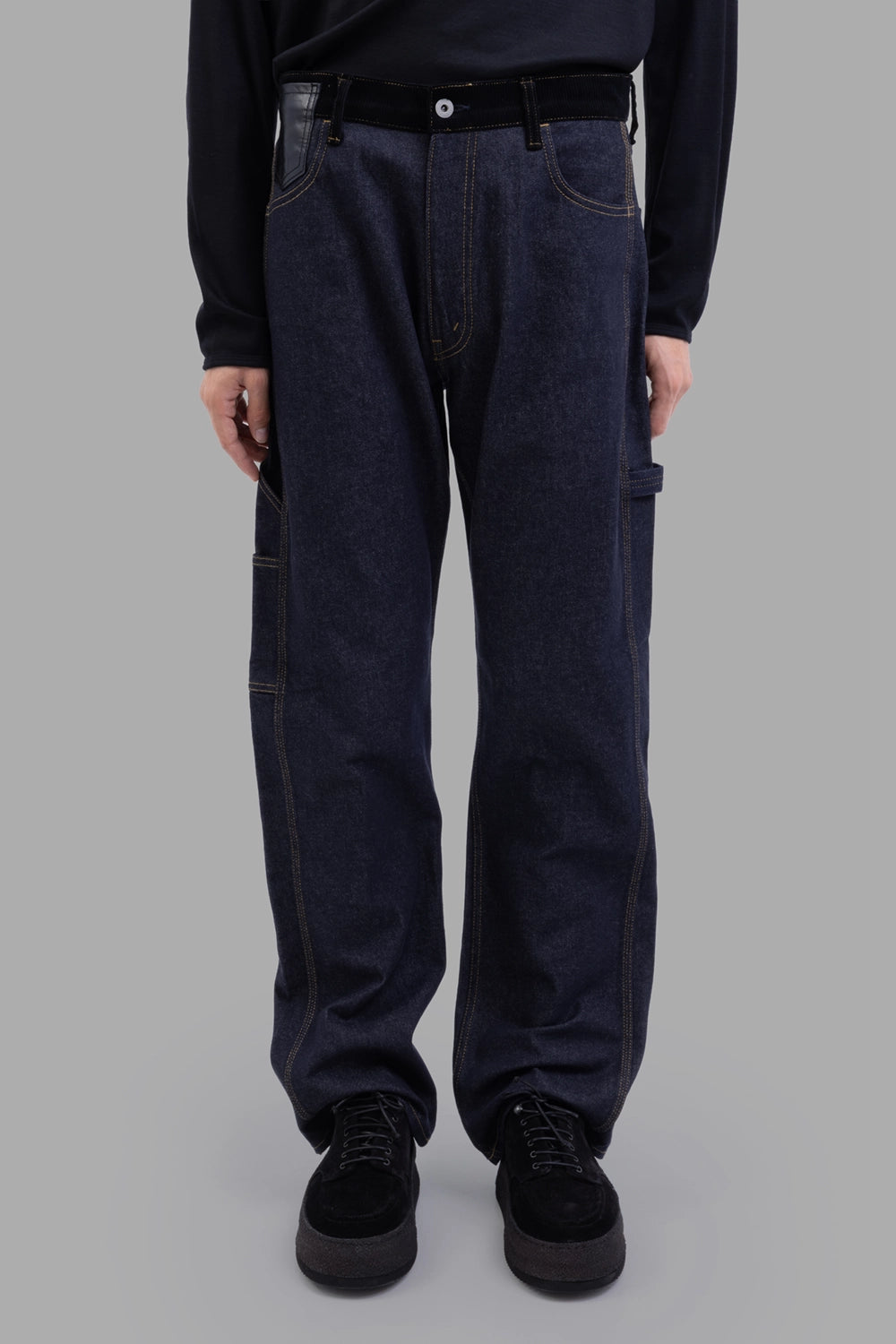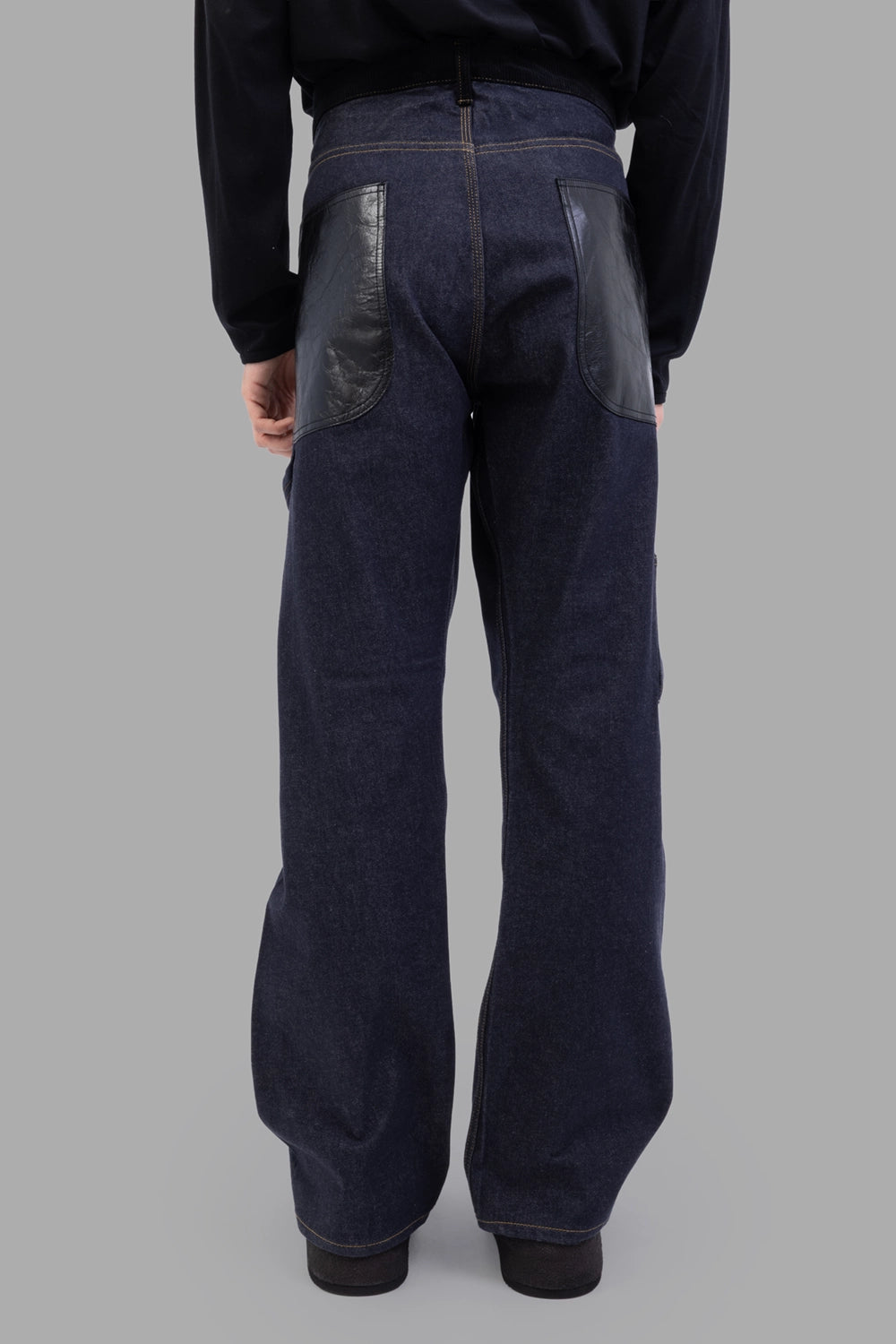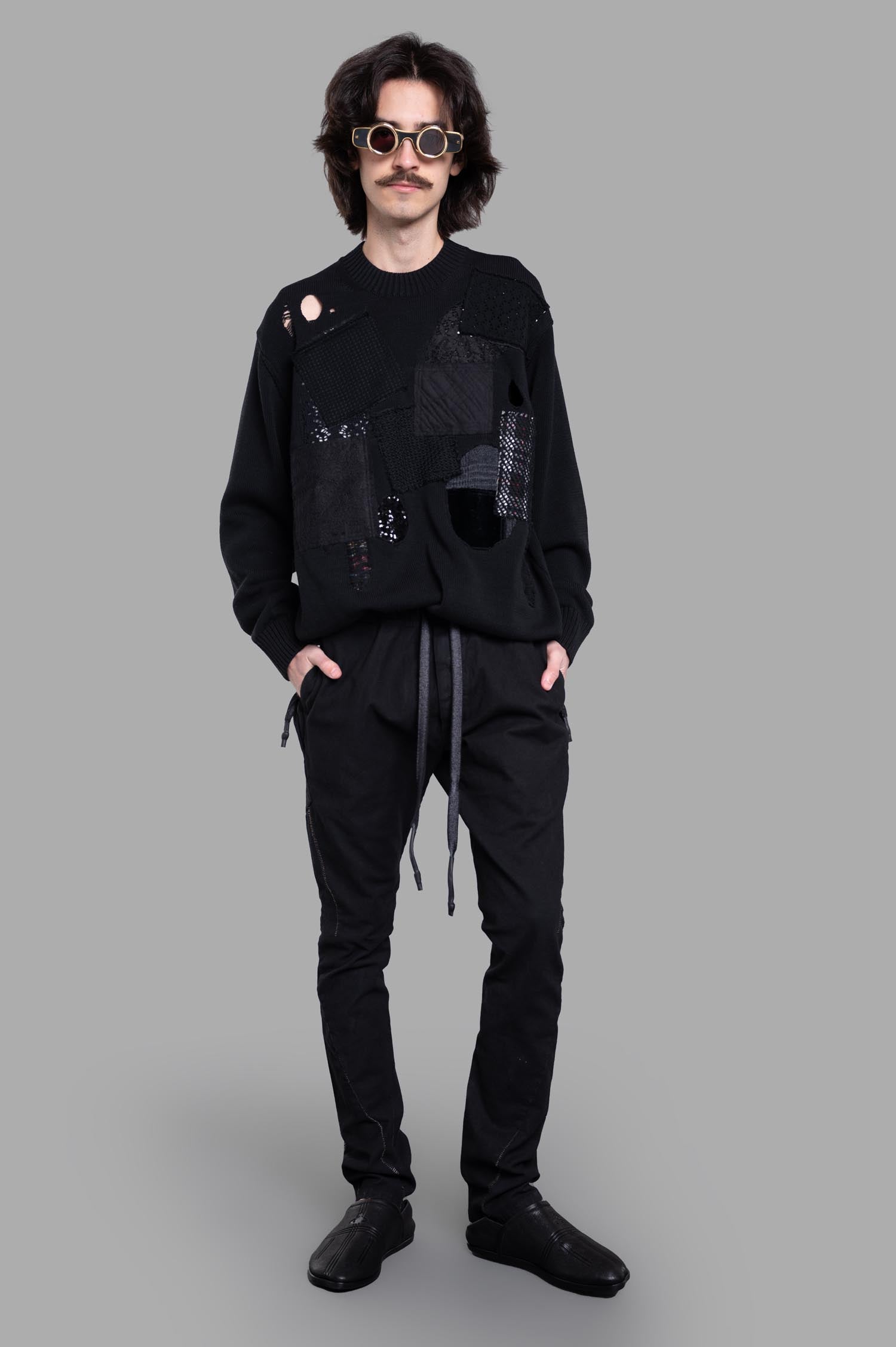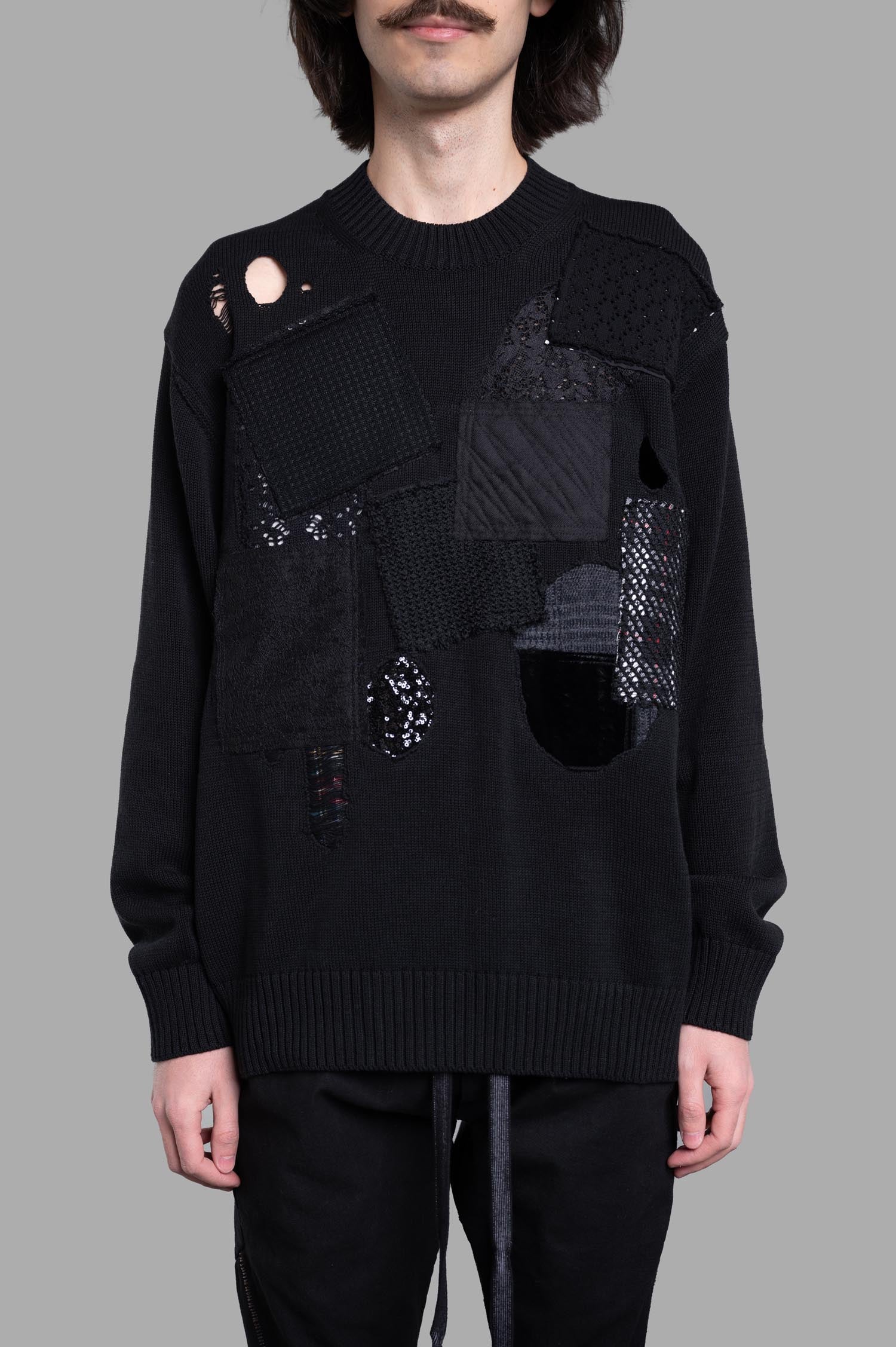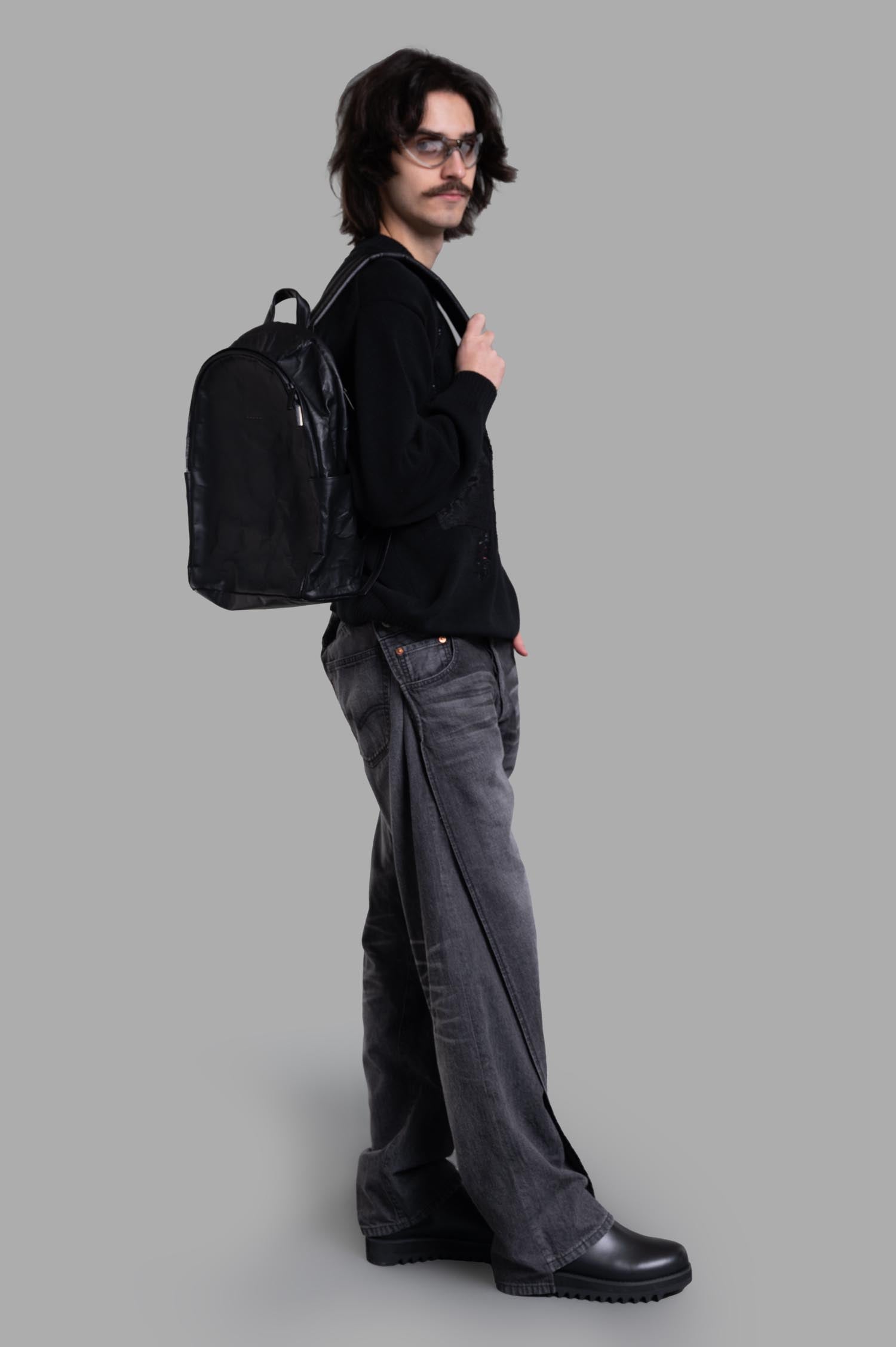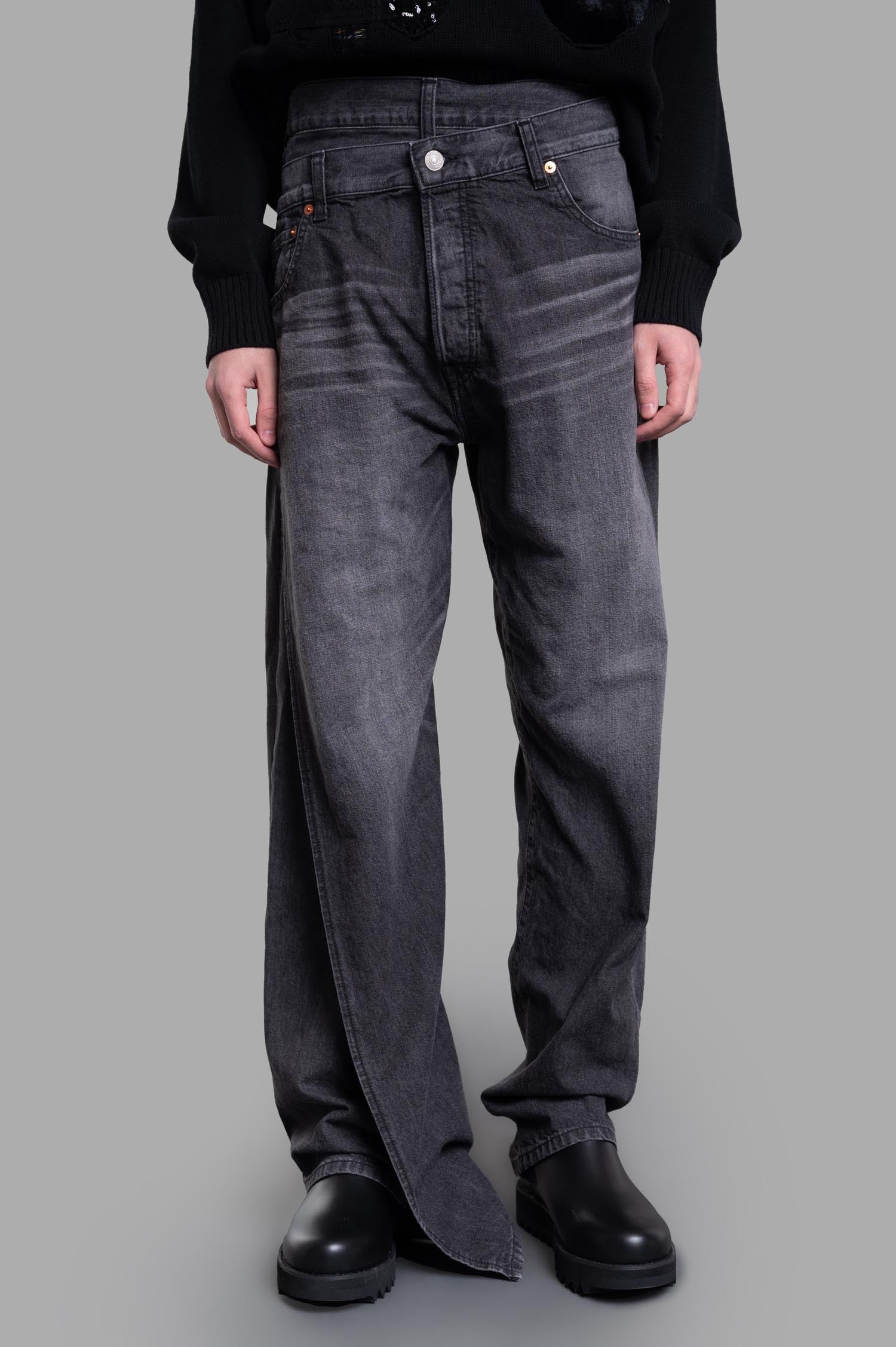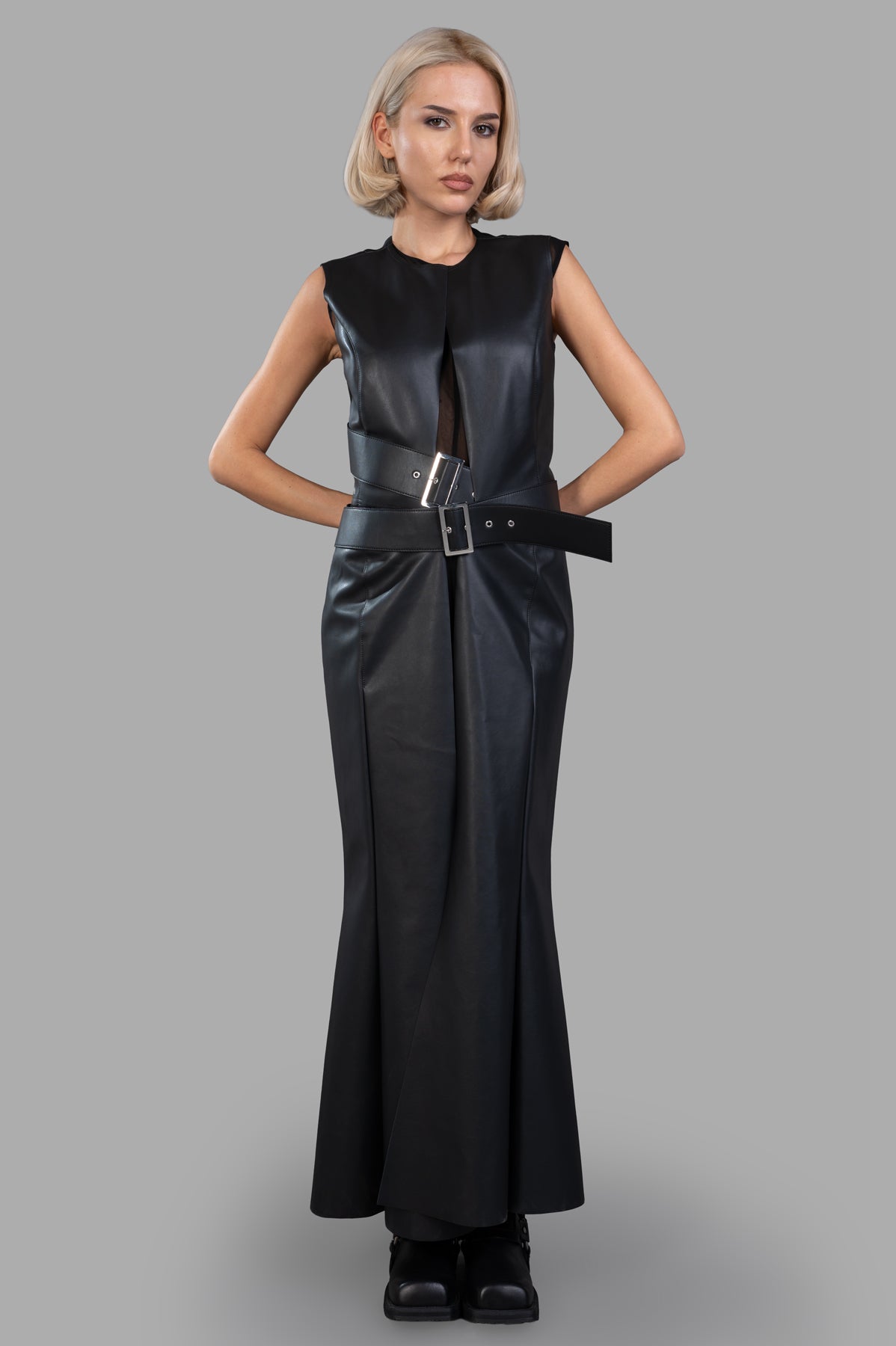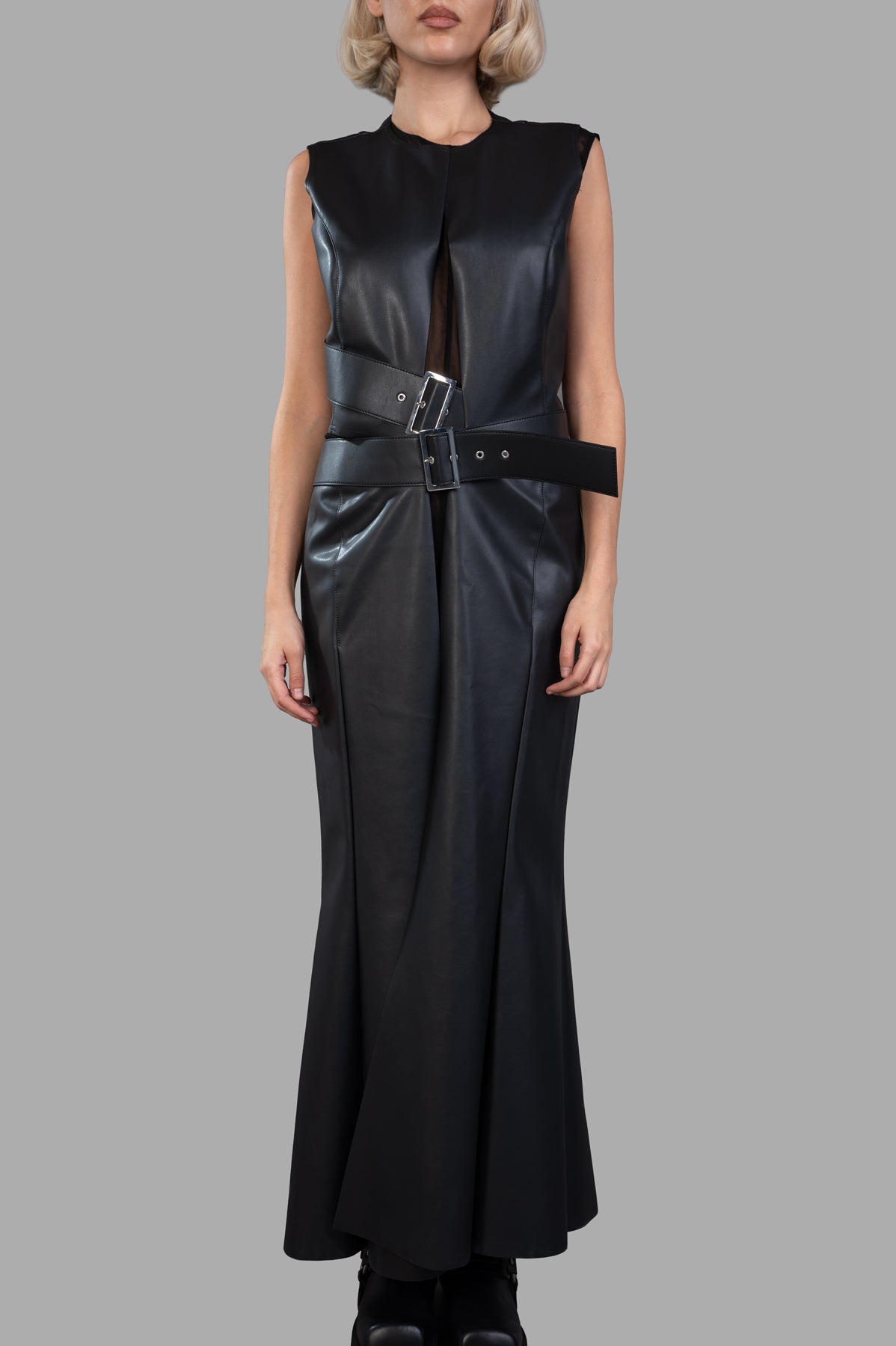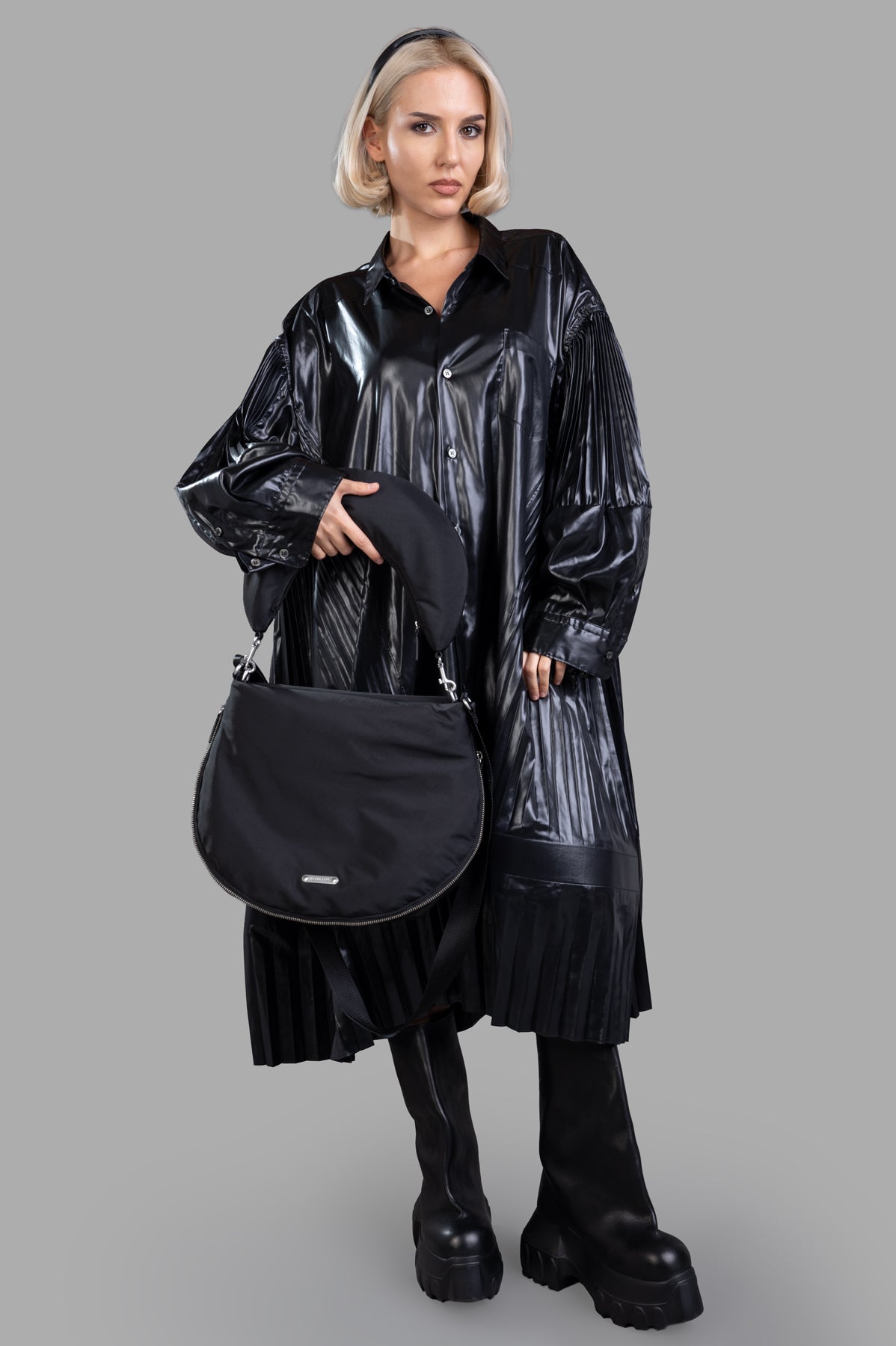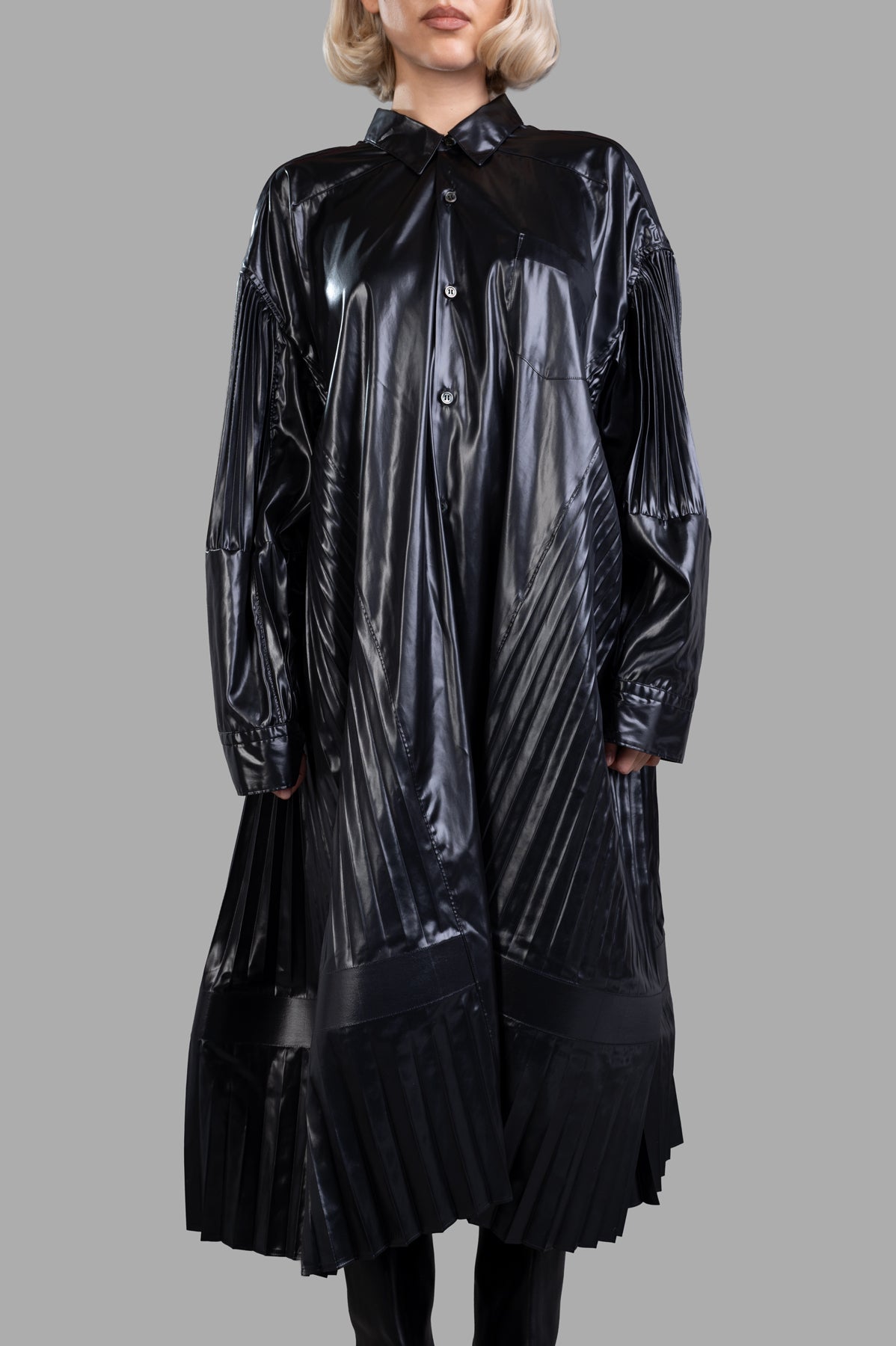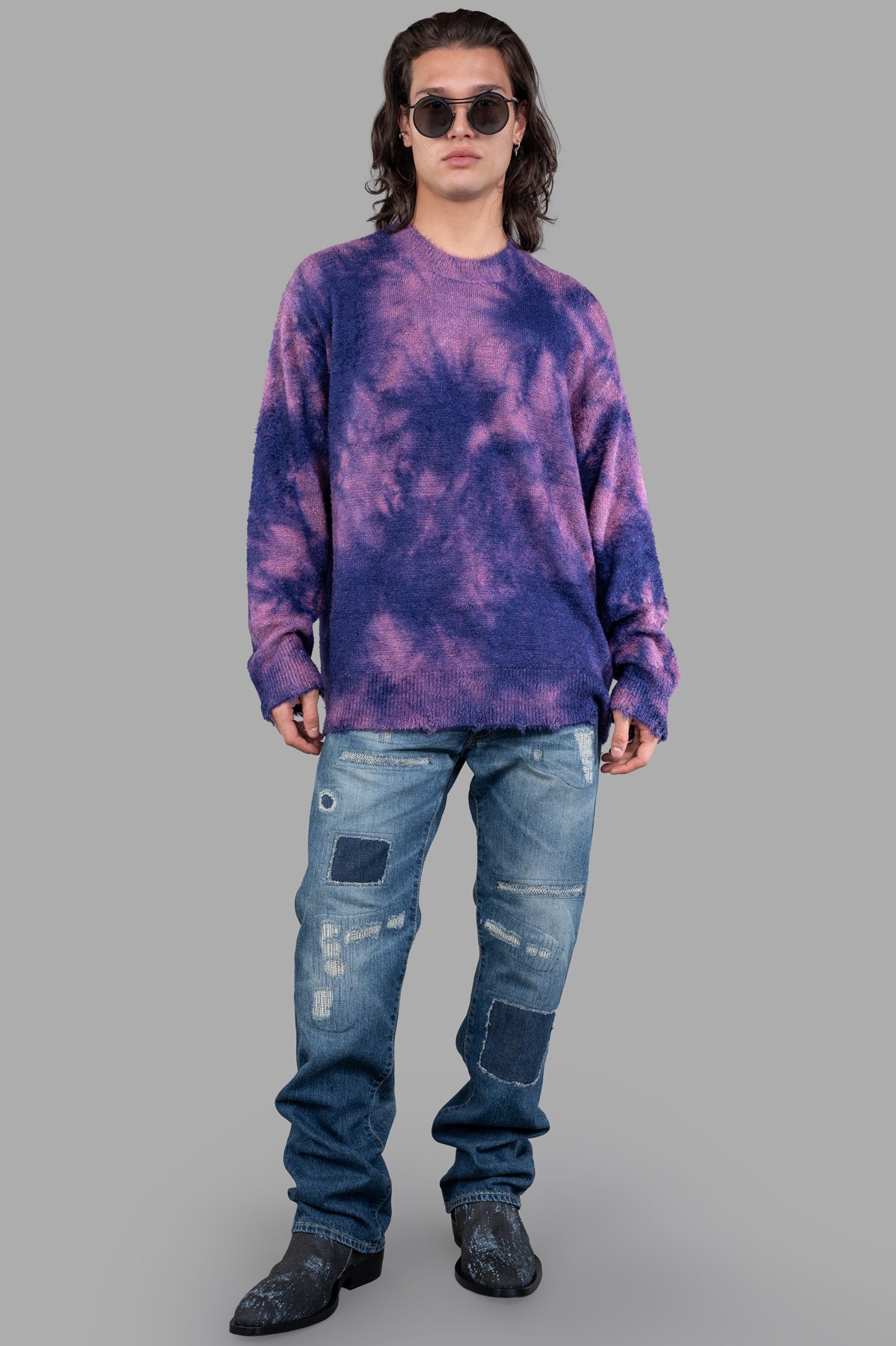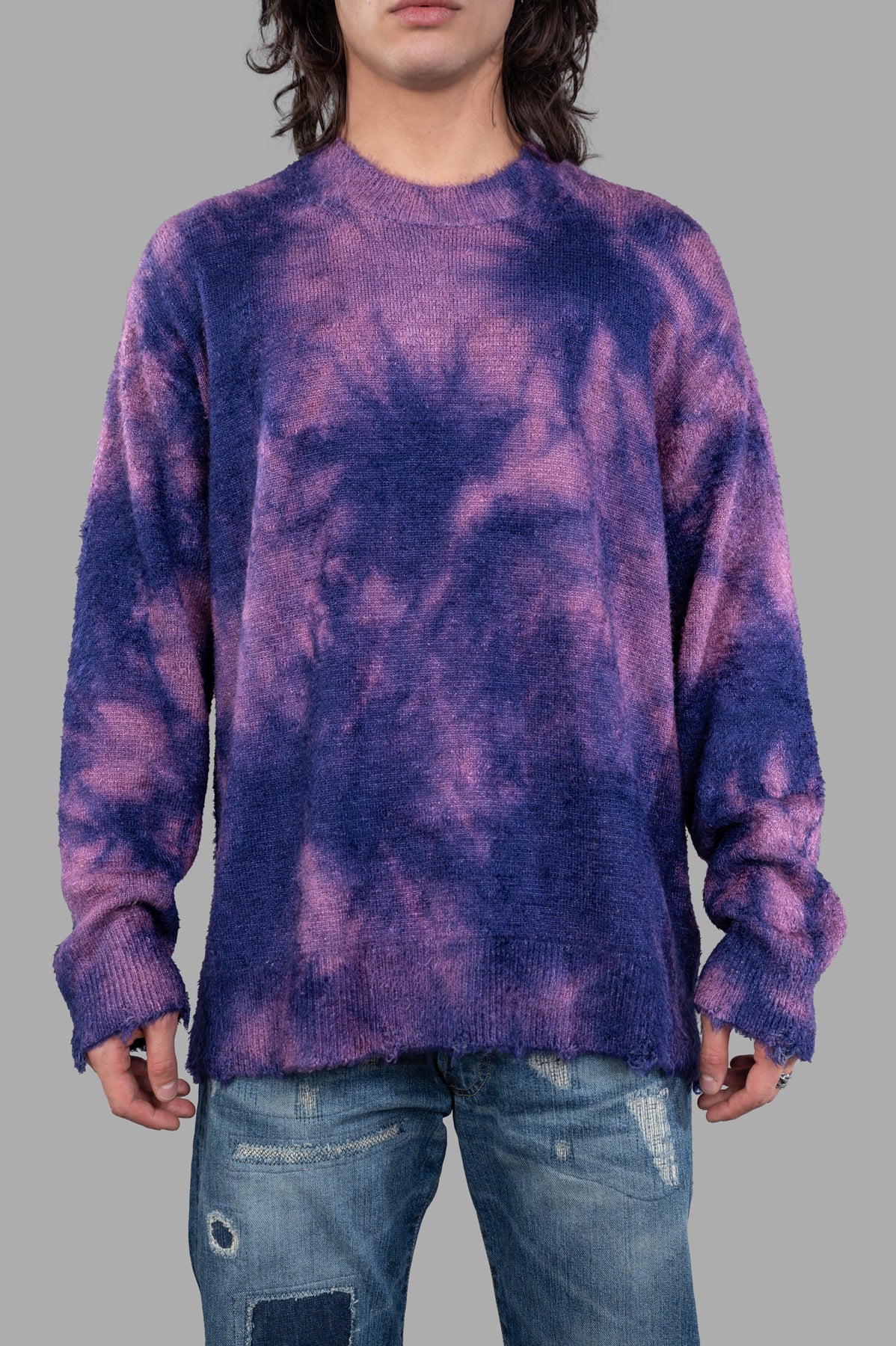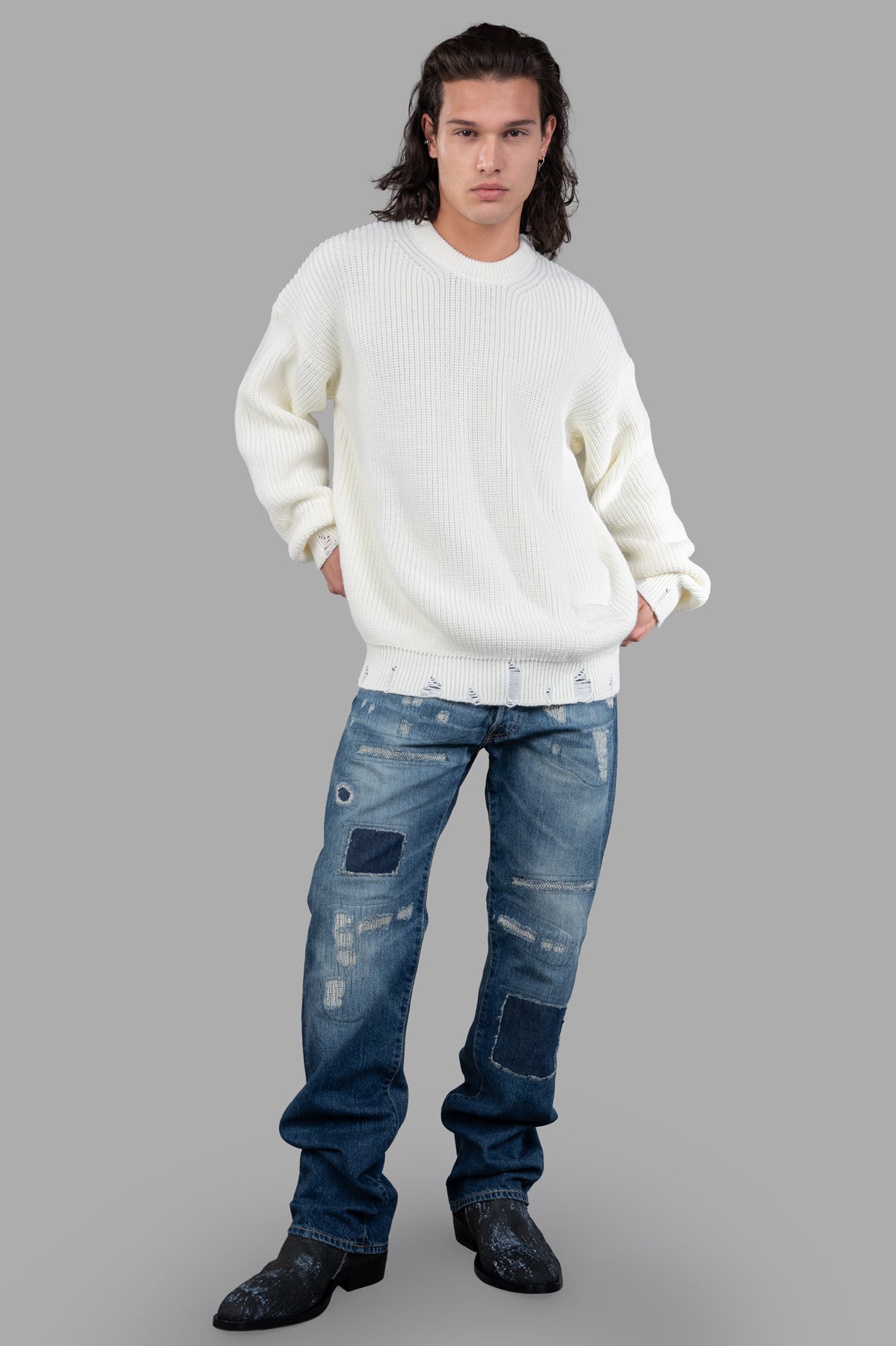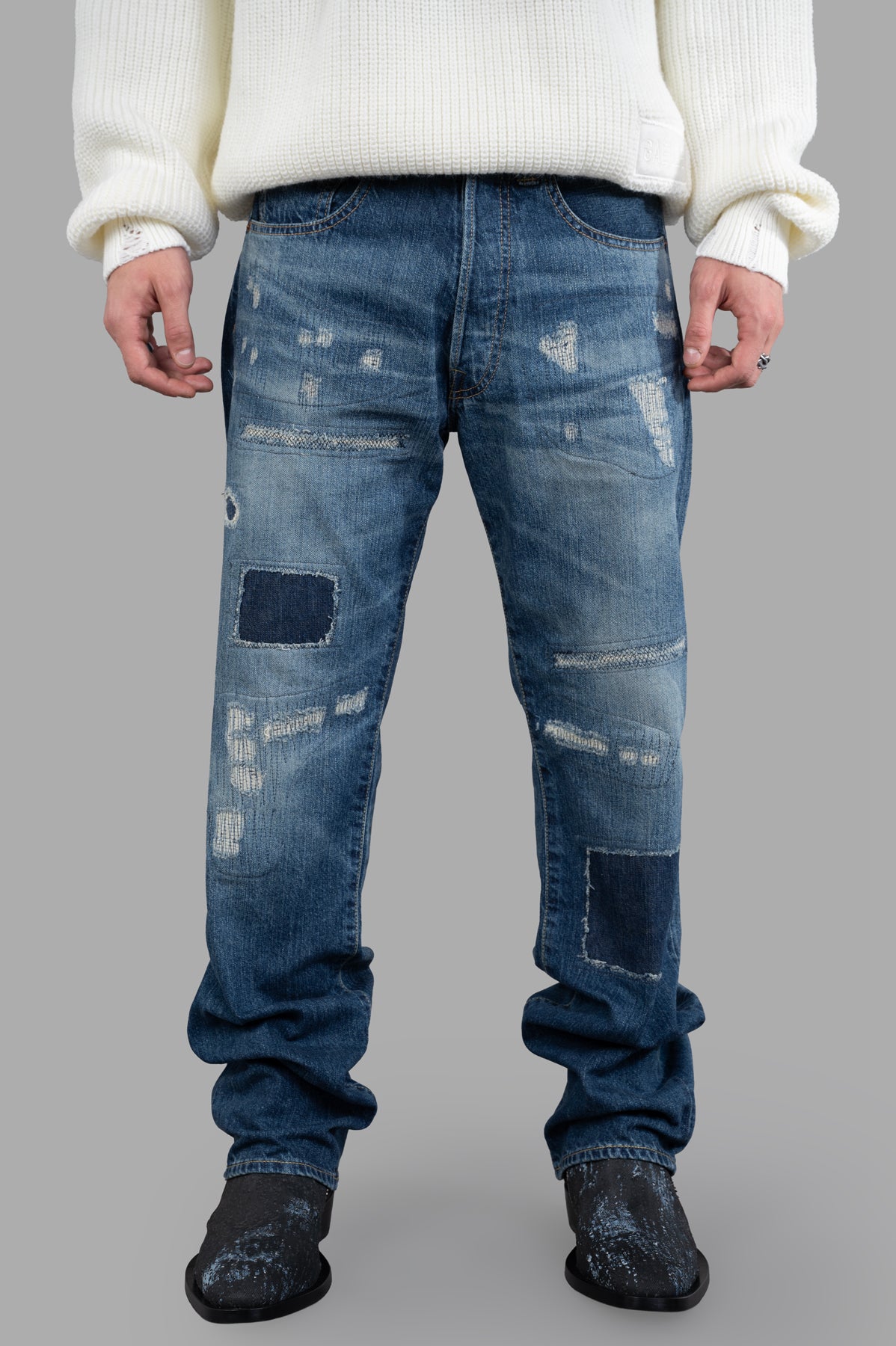Filters
Junya Watanabe builds clothing by rethinking the parts: reconstructed denim, precision tailoring, modular outerwear, and collaborative “real thing” pieces with heritage makers. On the rail now: Levi’s® patchwork jeans and tuxedo‑inspired denim, work and deck jackets spliced with bomber details, field shells developed with The North Face, and the much‑talked‑about New Balance 1906L “sneaker‑loafer.” Womenswear pushes volume—spiked biker‑jacket geometries and sculptural dresses—while menswear refines uniforms through fabric engineering. The label sits within the Comme des Garçons universe and shows in Paris; much of the ready‑to‑wear is made in Japan, with collaboration items following partner production.
Silhouette & construction
Tailoring, recut
Watanabe’s tailoring starts orthodox and then tilts the angle. Jacket fronts are extended, lapels spliced, vents exaggerated; darting and overlay panels redirect the line so a blazer moves like an engineered shell. Cropped bombers bond to trench fronts; deck jackets morph into leather blousons; tuxedo codes land on denim with satin‑seamed patchwork. The effect is precise on the body, graphic in motion.
Denim, rebuilt
Denim is a laboratory. Expect selvedge bases cut into rectangles and arcs, then re‑stitched with tartans, satin, sequins, leather appliqué, or contrast topstitching. Legs widen or taper by panel, leaving space for boots or stacked trainers. For SS25 menswear, tuxedo logic met jeans: wing‑tip shirting, bow ties, and dense patchworks that read formal at a glance and defiantly handmade up close.
Outerwear, utility‑plus
Parkas and field jackets carry heritage pockets, but the fabrics shift: gabardine bonded to coated leather, GORE‑TEX membranes on military shapes, synthetic‑leather Nuptse riffs in eYe capsules. Seams are taped or overstitched for stamina. Hardware placement is considered—carabiner points, backpack‑style straps, and detachable collars—so weight stays balanced and function is built in.
Womenswear, 3‑D
On the women’s runway, pattern becomes geometry. Biker jackets blow out into cubes and pyramids; crinoline volumes spring from luggage straps, tights, or interlocked shells. Surfaces shine—foil, patent, resin—then collapse to gauzy tubes that skim the body. Couture energy, ready‑to‑wear intent.
Materials & finish
Work and tech
-
Selvedge and overdyed denim in multiple weights, repeatedly cut and re‑joined with heavy thread; seams are meant to be seen.
-
Cotton gabardine and wool tweed for suiting and deck jackets, often paneled or bonded to unexpected substrates.
-
Nylon ripstop, GORE‑TEX, and Windstopper® across field shells and partner pieces with The North Face; look for taped seams and storm flaps where water resistance matters.
-
Synthetic leather on select eYe outerwear for a gloss that’s lighter than calf and easy to clean.
Craft cues
Contrast topstitching maps construction; pocket stacks recall workwear yet sit with the discipline of tailoring. Many garments are labeled Made in Japan; collaborative pieces may list partner countries of origin, reflecting each brand’s manufacturing base.
Advanced fibers
Recent capsules have introduced Brewed Protein™ (a lab‑developed, silk‑like filament) in tees and liners, signaling Watanabe’s ongoing interest in future‑leaning materials alongside classic cloth.
Signatures & icons
-
Levi’s® collaborations: reconstructed 501‑line jeans and patched denim evening wear; straight, wide, and cropped variants with selvedge edges and contrast stitch.
-
The North Face capsules: hybrid M‑65s, Nuptse interpretations, backpack jackets, and GORE‑TEX field shells—utility reframed through pattern engineering.
-
Workwear crossovers: Barbour‑style waxed coats, Carhartt chore references, Filson checks and cruisers, each re‑cut or panel‑switched.
-
Sneaker projects: New Balance 1906L “snoafer” shown at Paris and released through selected stockists; previous seasons touched Converse and other icons.
-
Womenswear geometry: biker‑to‑cube dresses, pyramid shoulders, spiked bustiers; black anchors, with flashes of foil, patent, and bright inserts.
How to wear it now
Weekday, sharp utility
Black gabardine blazer with a deck‑jacket panel, crisp poplin, straight patchwork Levi’s® collab jeans, and leather derbies. Keep accessories minimal so the seams read as line work.
Evening, denim tux
Tux‑inspired patched jacket over a wing‑tip shirt and dark wide‑leg denim. Add polished boots and a narrow tie; let the contrast stitching be the jewelry.
Weekend, city field
GORE‑TEX eYe shell over a knit and tapered cargos. Switch between New Balance 1906L loafers and sturdy hikers; pocket discipline covers the day.
Travel, light layers
Bonded bomber‑trench hybrid with a soft tee and elastic‑waist tailored trousers. Inside‑out detailing makes creases deliberate, not messy.
Fit & sizing notes
Coats & jackets: True to size through shoulder and sleeve; many hybrids sit neat at the neck and broaden through the body via panels. If layering heavy knits, consider one size up in structured pieces.
Trousers & jeans: Waist specs vary by model. Collab and eYe pants can run generous in the waist and seat relative to tagged size; check garment measurements and rise. Tailored trousers run closer to standard EU sizing.
Shirts & knits: Poplin shirts cut straight with room to move; tees and fine knits run regular, not skinny.
Footwear collabs: 1906L follows New Balance’s 1906 platform feel; most wear true to size, adjusting only for foot width and sock weight.
Made where?: Much mainline RTW is Made in Japan; collaborations often reflect the partner’s production geography. Always refer to the care label.
Care & longevity
-
Reconstructed/patchwork denim: Turn inside out; cold wash sparingly; avoid heavy tumble to protect appliqués and stitch integrity. Expect seam variation; a denim repair studio can reinforce stress points without losing character.
-
GORE‑TEX and technical shells: Fasten closures before washing. Cool machine wash with tech‑fabric detergent, no softeners; tumble low to reactivate DWR if the label allows. Reproof when water stops beading.
-
Synthetic‑leather shells: Wipe with a damp cloth; avoid solvents and high heat.
-
Gabardine/tweed tailoring: Brush and steam; dry clean when required.
-
Hardware & zips: Keep clear of grit; spot‑lubricate sparingly; avoid forcing.
-
Storage: Wide hangers for structured jackets; fold denim on seam; keep tech pieces away from sharp hardware to prevent snags.
Heritage & today
Junya Watanabe (Fukushima, 1961) joined Comme des Garçons after graduating from Bunka Fashion College in 1984, rose through Tricot and Homme, and launched Junya Watanabe Comme des Garçons in the early 1990s, showing womenswear in Paris. Junya Watanabe MAN followed in 2001, with the casual, collaboration‑driven eYe JUNYA WATANABE MAN operating in parallel—often Japan‑led, frequently partner‑made. The brand remains on the Paris calendar across women’s and men’s seasons. Recent shows have ranged from cubist biker constructions and leather geometrics for Fall 2025 to Spring 2026’s salon‑paced “extraordinary art from the everyday” transformations—turning tights, luggage, and even cutlery into striking silhouettes. Collaboration is a constant, but not a gimmick: Levi’s®, The North Face, Brooks Brothers, Alpha Industries, Filson, and New Balance lend templates and technologies that Watanabe bends into his own grammar of utility and form.
Responsibility
Watanabe’s stance publishes through product. Highlights include Made in Japan manufacturing across much RTW, long‑life materials (selvedge denim, gabardine, wool), and targeted experiments—like tees using Brewed Protein™ fiber in a 2025 eYe × The North Face capsule—exploring lower‑impact alternatives to conventional silk‑like filaments. The label doesn’t issue sweeping sustainability reports; evaluate piece by piece: composition, origin, and serviceability. Reconstructed denim and robust outerwear reward repair and keep wearing better over time.

